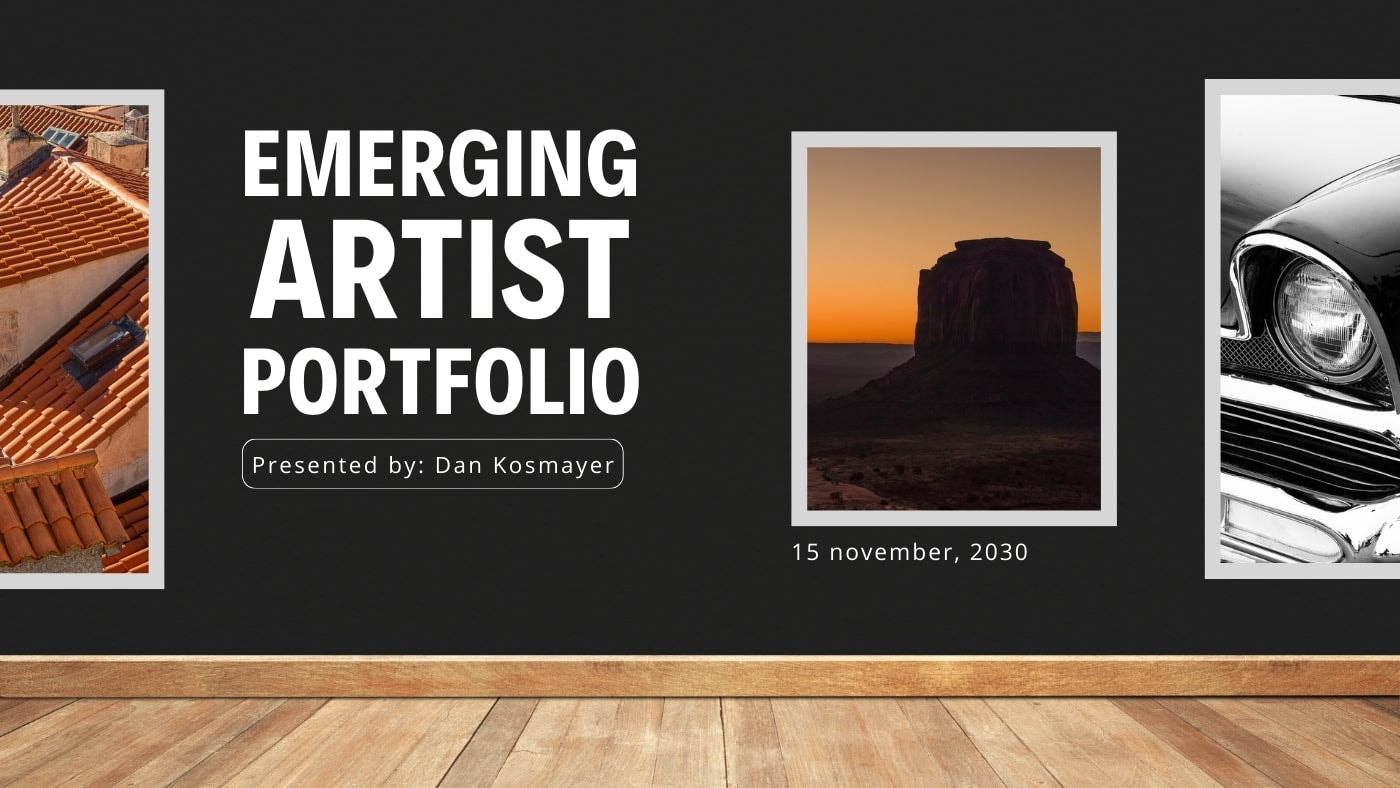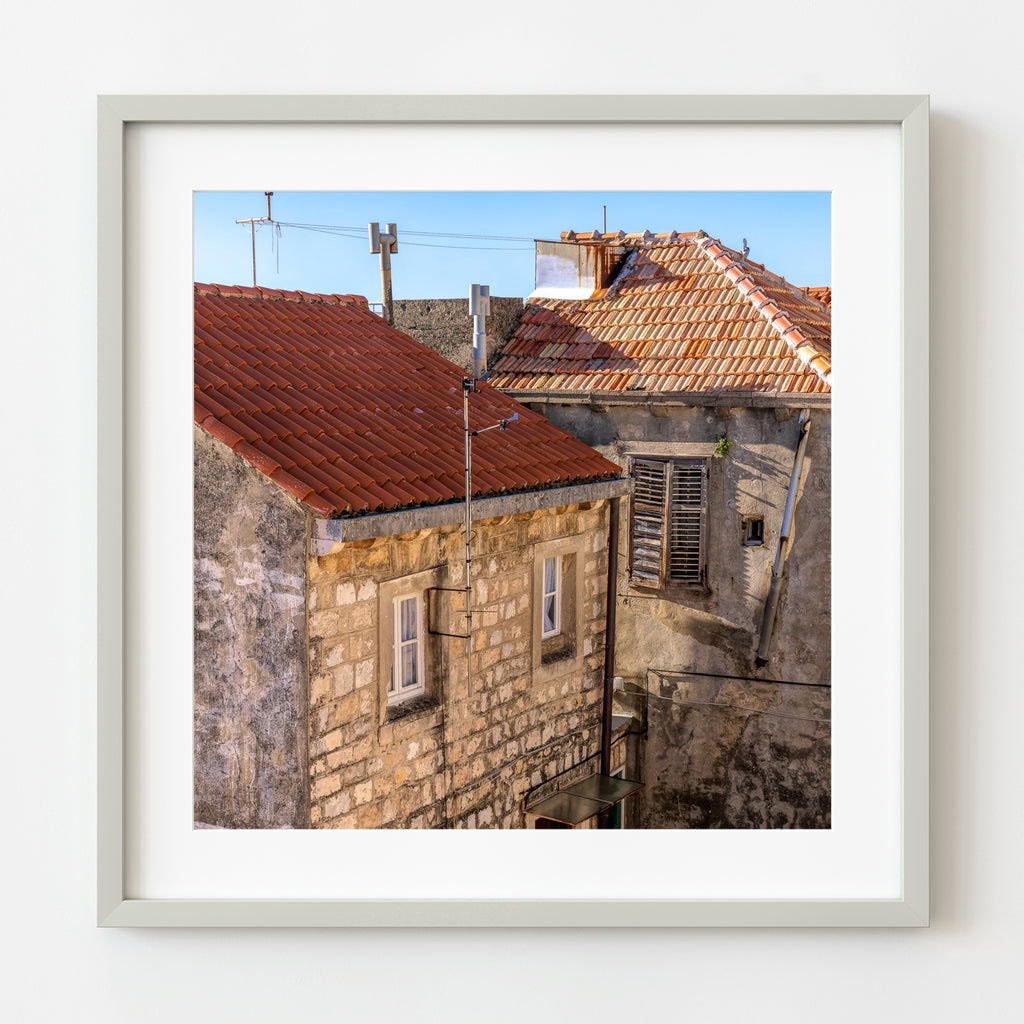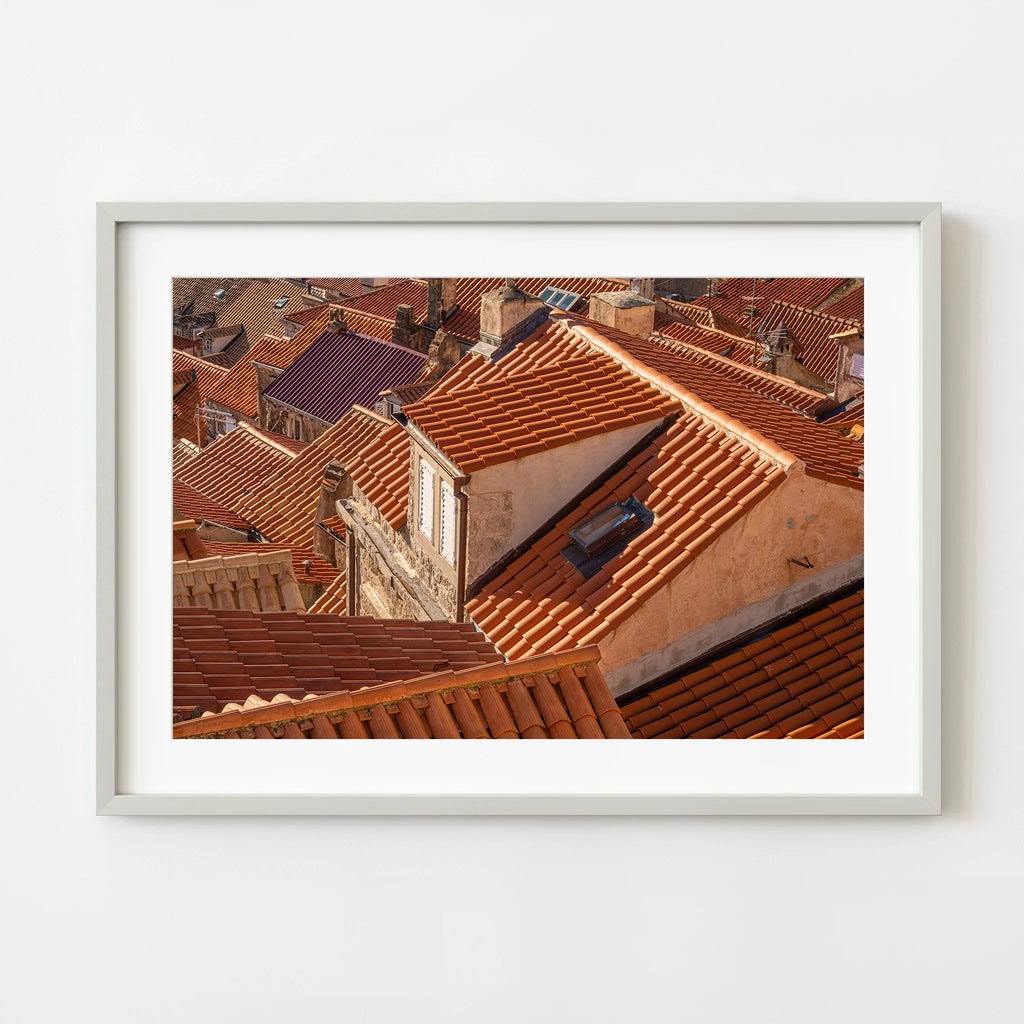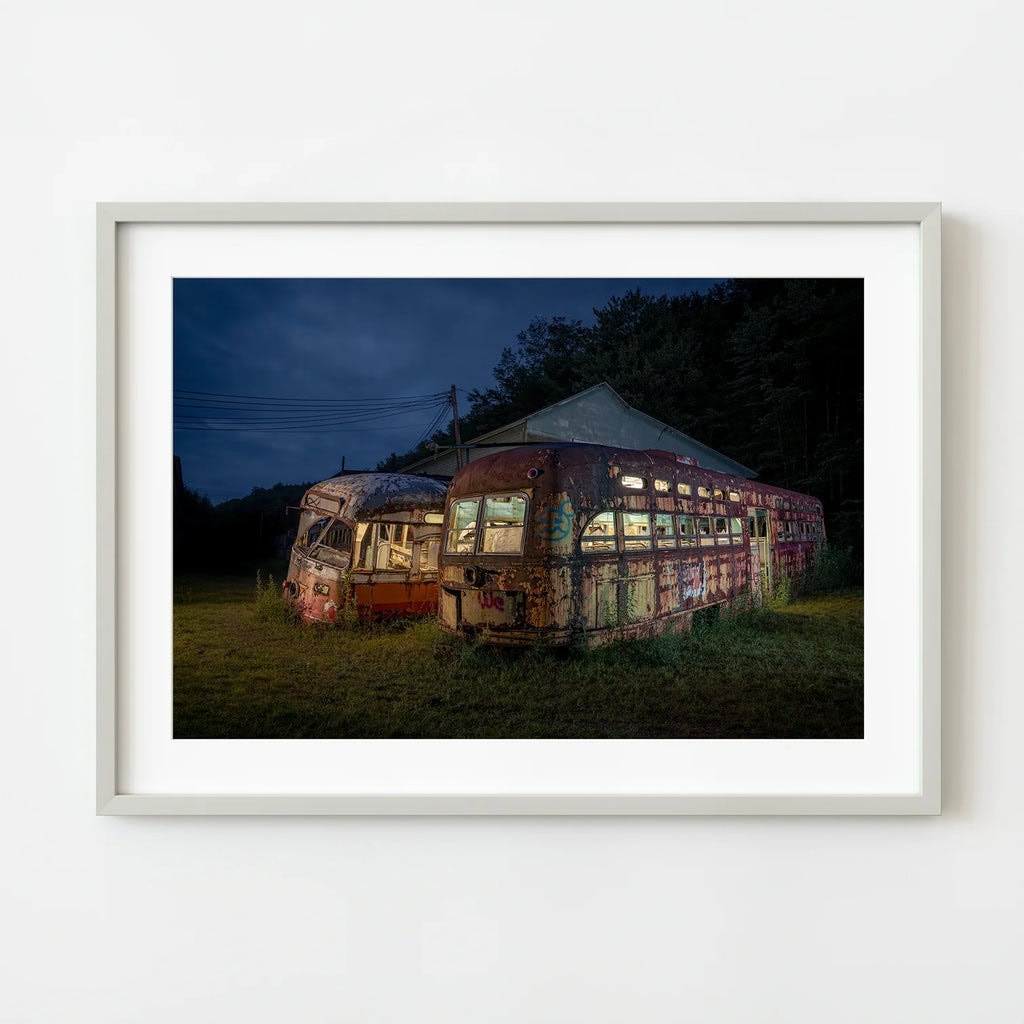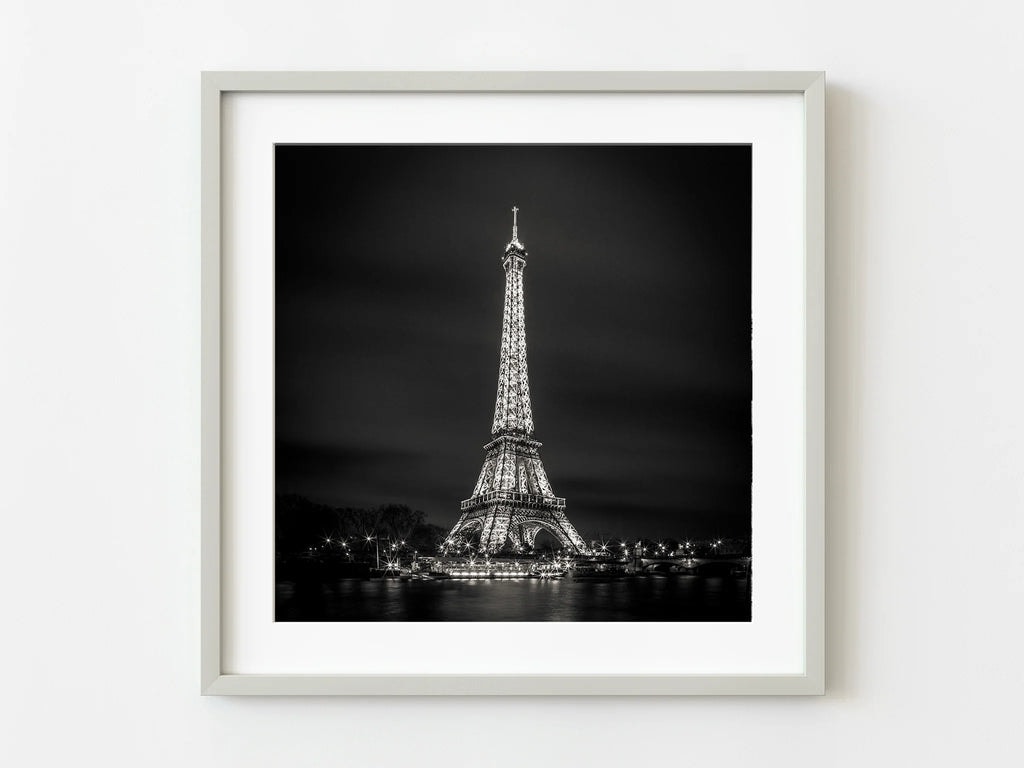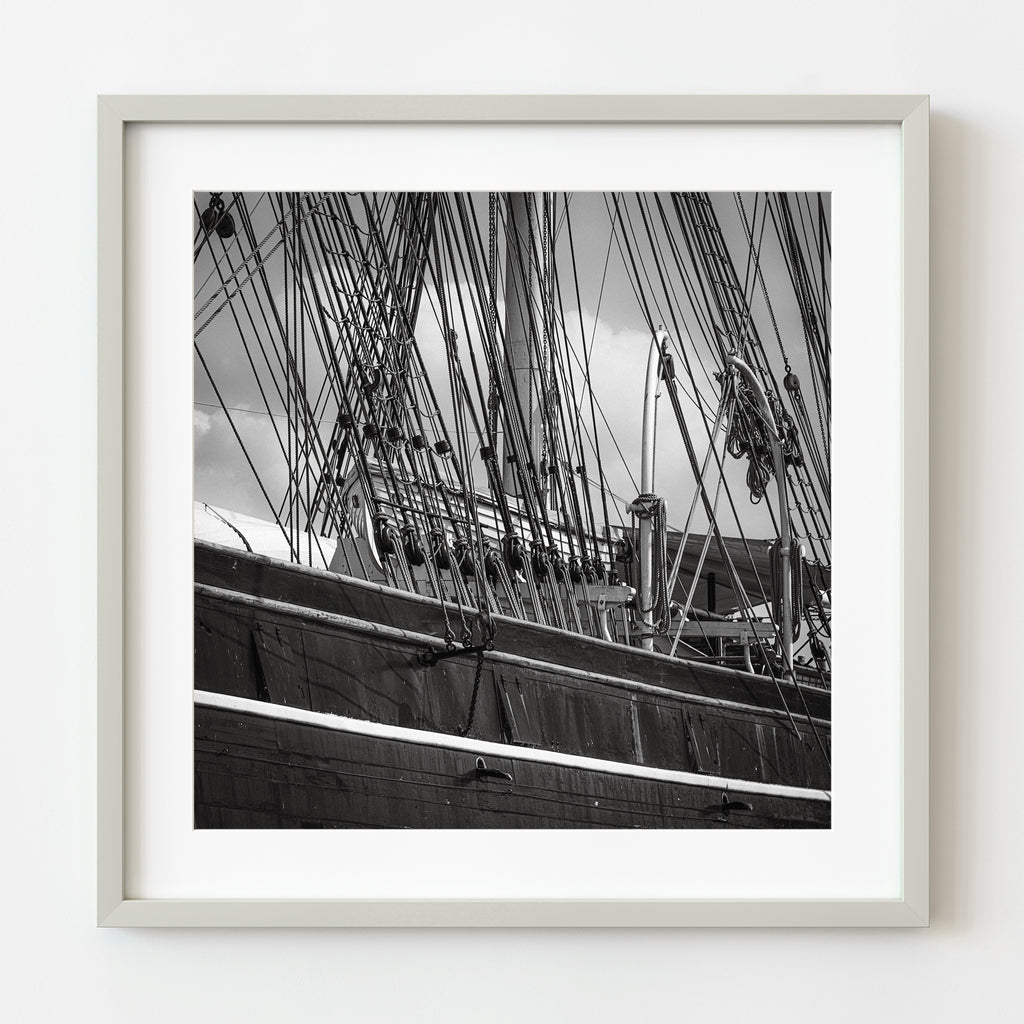A Misty Morning at Caddo Lake: Featured on 1x 9 May 8:19 AM (5 months ago)
This article originally appeared on Digital Image Magazine by Dan Kosmayer.
When Stillness Speaks: How a Quiet Southern Swamp Scene Earned International Recognition
I don’t shoot for awards. I shoot for that unexplainable stillness—the hush before the world fully wakes up. But occasionally, something I’ve captured resonates beyond my quiet process.
This image from Caddo Lake, taken on one of those fog-draped mornings when time seems to fold in on itself, was recently selected by the curators at 1x.com, a gallery known for its strict standards and curated excellence. For those outside the photography world, 1x isn’t a social platform where anyone can post—images are chosen based on artistic merit by professional curators, not algorithms.
The scene is simple, but it’s the simplicity that comes with hours of watching light behave like smoke. Spanish moss dripping from bald cypress. Soft ripples under the canoe. That haunting hush that only exists in places untouched by time.
When I look at this photo now, I don’t just see a landscape—I remember the stillness. I remember standing there with boots soaked, breath hanging in the morning air, waiting for the mist to do what it does best: obscure just enough to let your mind fill in the rest.
This one hit differently. I’m honoured it was recognized by 1x, but more than that, I’m glad this quiet moment might now live on a little longer.
Experience the fine art print that caught 1x’s eye → Misty Morning at Caddo Lake Wall Art
© Dan Kosmayer. All images and content are protected. View more fine art photography and articles at Digital Image Magazine.Best Art Gallery Sites 8 Sep 2024 12:52 PM (last year)
This article originally appeared on Digital Image Magazine by Dan Kosmayer.
Top 10 Art Gallery Sites to Find Art Online
In today’s digital age, finding great art is easier than ever. Whether you’re a seasoned collector, art lover, or just looking to decorate your space, the best art gallery sites are all at your fingertips. From classic paintings to digital art, these platforms have some of the best art worldwide. These sites feature a wide range of artists from different eras, both established and emerging. The beauty of these online galleries is they break down geographical barriers and connect you directly to the source of creativity. Let’s get started with my fine art photography.

Art Gallery Websites
Dan Kosmayer Fine Art Photography
My gallery is more than just a visual experience; it’s an invitation to the stories I’ve captured in still moments. As one of the top art gallery sites, my collection goes from serene landscapes to gritty cityscapes, each print carefully selected to bring depth, emotion, and character into your home or office. Whether you want a minimalist black and white or a bold color piece, my gallery is where you can turn walls into statements. With thousands of fine art pieces for sale, there’s something for every style and space.
Saatchi Art is one of the top art gallery sites for exploring a wide range of styles, from abstract painting to contemporary sculpture. With over 65,000 artists on the site, buyers can discover new talent and connect with established artists. The site is easy to use: browse, filter, and find the perfect piece for your space. It has a global reach, so no matter where you are, you can get great art and support independent artists.
If you want to get into the art world, Artsy is one of the top art gallery sites. It partners with leading galleries and museums and offers articles, art market reports, and curated collections. With over 2 million artworks from more than 100,000 artists, it’s the most comprehensive look at contemporary and classic art movements. It’s the platform for collectors, investors, and enthusiasts to stay on top of the art market.
For classical art and academic realism lovers, the Art Renewal Center is a must. As one of the top art gallery sites for traditional art, it has an archive of over 60,000 classical works and a treasure trove of paintings and sculptures that honor the old masters. Their mission is to promote the visual arts and preserve the skills passed down for centuries. This is the site for those who love old-school realism and want to see the work of the greats.
Smithsonian American Art Museum
The Smithsonian American Art Museum has an excellent online collection and is one of the top art gallery sites for exploring America’s artistic history. From early colonial to modern contemporary, they have something for everyone. Their digital exhibitions are well organized, so you can jump into different periods of American art, indigenous, abstract expressionism, photography, etc. This site has a tremendous educational component, so it’s perfect for casual browsers and severe art scholars alike.
Want to see the private collection of the British royals? The Royal Collection Trust gives you access to some of the most famous pieces in European history. As one of the top art gallery sites for historical art lovers, it has masterpieces from the greats like Rembrandt, Vermeer, and Van Dyck. You can browse the Queen’s personal collection and see centuries of lovingly preserved artworks. It’s a site for those who want to see historical art that tells the story of European royal history.
Fantasy and science fiction artwork. Epilogue is a favorite among fans of imaginative and futuristic art. As one of the top art gallery sites for genre fans, Epilogue is curated by editors who only select the best work. Whether you like digital illustrations or traditional fantasy paintings, Epilogue is the site to enter worlds of dragons, magic, and other fantastical realms.
Home to fantasy art legends like Frank Frazetta and the Hildebrandt brothers, the Fantasy Fine Art Gallery is one of the top art gallery sites for mythological and otherworldly themes. The gallery has a wide range of fantasy styles, from traditional fantasy painting to digital art. The detailed and immersive artwork here makes it a must-visit for fans of magical landscapes, heroic figures, and ethereal scenes.
Founded in 1871, New York’s Salmagundi Club is a historic institution dedicated to the fine arts. It has in-person and digital exhibitions. Salmagundi Club is one of the top art gallery sites for American art. With a vast collection of paintings, drawings, and sculptures, it’s a must-see for anyone interested in traditional American art. The club’s site is a great resource for learning about its history and browsing past exhibitions.
Jason Godbey’s digital art is amazing. He can capture mood and light in architectural environments like no one else. As one of the top digital artists today, Godbey’s work belongs on the art gallery list. His portfolio has complex and serene architectural renderings, technical skills, and artistic creativity in every piece. He’s perfect for those who like the intersection of digital and fine art.
Conclusion
Thanks to these best art gallery sites, art has never been more accessible. Whether you like classical paintings, bold photography, or futuristic digital art, each site has something different. Start your journey here and see how art can change not just your space but your whole perspective.
This version has extra descriptions and repeats the SEO keyphrase “Best Art Gallery Sites” to boost visibility.
Online Art Galleries Intro
The online art gallery has changed how we experience and interact with art. With one click of a button, art lovers can now browse thousands of artworks, discover new artists, and buy pieces from the comfort of their own homes. Online art galleries have made art more democratic; now, people all over the world can engage with and enjoy fine art. In this article, we will explore the world of online art galleries, the benefits, top sites, and how to buy art online.

Online Art Galleries Benefits
Online art galleries have many benefits for art lovers, collectors, and artists. First, they offer unparalleled access to thousands of artworks so that you can browse and discover new pieces from your own home. Online galleries also provide a platform for emerging artists to show their work, a much-needed boost to their careers. They also have upcoming exhibitions, artist interviews, and behind-the-scenes content, a peek into the art world. Online galleries can reduce the environmental impact of physical galleries, making them a more sustainable option.
Best Art Gallery Sites
There are many online art galleries, each with a different view of the art world. Here are some of the top art gallery sites:
- Pace Gallery: A contemporary art gallery representing many of the world’s top artists and estates.
- Victoria Miro: A British contemporary art gallery in London, showing established and emerging artists worldwide.
- Unravel Van Gogh Amsterdam: A website about the life and work of Vincent Van Gogh, with thousands of his artworks and letters.
Finding Emerging Artists Online
Online art galleries offer a platform for emerging artists to show their work and get exposure. Sites like Dan Kosmayer has thousands of original photographic fine artworks, so collectors and art lovers can discover fresh original wall art print. And social media platforms like Instagram are a hub for emerging artists to share their work and connect with buyers. Follow hashtags #emergingartist and #contemporaryart to discover new artists and stay current with the art world.

Buying Art Online
Buying art online can be scary if you’re new to the art world. Here are some tips:
- Research the artist and their work. Learn about the artist’s background and previous work to verify authenticity and value.
- Review the website’s return policy: Avoid potential problems and ensure a smooth purchasing process.
- Consider the artwork’s size, medium, and framing: Make sure it fits your space and style.
- Don’t be shy: Ask questions if you need more info.
- Look for certificates of authenticity and documentation: Proof of provenance and value. Each fine art print created by Dan Kosmayer comes with a certificate of authenticity.
Online art galleries have changed the way we see and interact with art. With thousands of artworks, emerging artist showcases, and user-friendly interfaces, online galleries have made it possible for people everywhere to enjoy fine art.
Follow the tips above and check out the best art gallery sites. Art lovers can discover new artists, buy original art, and stay current with the art world.
© Dan Kosmayer. All images and content are protected. View more fine art photography and articles at Digital Image Magazine.Boost creativity and critical thinking by walking 15 Apr 2024 12:45 PM (last year)
This article originally appeared on Digital Image Magazine by Dan Kosmayer.
Five reasons why you should make walking part of your daily routine to boost creativity
Business moguls, entrepreneurs, and innovators all take to walking as a way of clearing their minds, developing new ideas, and basically boosting creativity. Throughout history, many big minds have valued walking for helping them tap into their creativity. Steve Jobs was famous for and valued walking for helping him tap into his creativity for contemplation and meetings.
Many people claim that moving about often brings about their best ideas, and for the skeptics, there is science to back these claims. Marily Oppezzo and Daniel, Students from Stanford University, studied 176 college students in 2014 as they engaged in various creative thinking tasks. For this study, Marily and Daniel used Guilford’s Alternative Uses Tasks, which required participants to list as many alternative uses for one everyday object as possible. The answers were all scored based on the number of ideas listed, originality, and detail.
To achieve the objectives of this study, the authors asked college students to perform these tasks in varied conditions. They were instructed to sit outdoors or outdoors, walk outside or on treadmills. It emerged that people who took the study walking on treadmills or outdoors were significantly more creative than when they were seated. 81% of those who took the study claimed to experience heightened creativity while on the move. A consequent test after walking indicated that the participants were still more creative. This proved that the positive effects of walking lasted even after sitting down.

That was the only study into the effects of walking on creativity, but there are clear indications that it increases blood flow around your brain, which stimulates creativity. The Stanford University Study also revealed that it doesn’t matter whether you walk outside or indoors as it is not about the environment but rather the act of walking.
However, the walking study also showed that if one has to focus on a question that requires a single answer, the results are the same whether one is walking or sitting. According to this study, walking only affects the creative mind and doesn’t come in handy when there are predefined answers to a question.
This study simply shows that walking can aid creative brain function, especially when you feel stuck at your desk. Instead of waiting for your creative block to fade away on its own, head out for five minutes to see if increased blood flow to the brain will boost your creativity. A few minutes of brisk walking, for example, helps reduce stress hormone levels, which in turn improves your mood and makes it easier for you to develop ideas.
Walking will keep you healthy
Nilofer Merchant, a busy business innovator, confessed to difficulties fitting exercise into her busy routine during a TED talk a few years back. During her talk, she made it clear that we spend a whopping 10 hours on our backsides every day. Needless to say, this is a negative statistic that is bad for our behinds and hearts.
Medical statistics show that physical inactivity is a leading cause of diabetes, heart disease, and several debilitating cancers. Physical inactivity is the leading cause of colon and breast cancer, so you might consider daily walks to reduce the risk. Walking works your muscles and tones them to keep you looking trim and well-structured despite the nature of your job. Spending hours hunched over a desk may rake in some good cash for you, but you might spend it all on doctors’ fees trying to correct your spine, lose weight, or treat a heart condition.

Merchant compares sitting to smoking, a slow, silent killer whose effects people will discover later. Walking is like a magic pill that is needed in small doses to ward off colon cancer and dementia and marginally lower your risk of heart disease. Thirty minutes of walking would suffice, but if you do not have time, consider breaking it down into 10-minute chunks to give your body and brain some much-needed exercise. Remember that if you do not have the time to venture outdoors, you can walk on a treadmill for the same benefits to your mind, body, and soul.
Walking will increase your productivity
The TV show ‘The West Wing‘ proves this fact too well. The busy staffers at the presidential office were ever too busy to sit around for meetings. This situation led to the walk-and-talk philosophy, where people always do things on the move. Today, walking meetings are the thing, especially in Silicon Valley. The notion is that rather than holding meetings across a desk, it is better to take it outside and exercise while at it. Nilofer Merchant claims that she gets most of her exercise from the walking meetings she holds throughout the week, and the good thing is that these are usually the most productive.
There are fewer distractions as people walk because they have to leave their smartphones in the office and need more computer access, which is the most significant cause of interruptions when people hold office meetings. With fewer distractions, people are able to concentrate on their work and, therefore, develop ideas that will grow their businesses.

This is impossible for some people who do not like being away from their devices. Such people suffer anxiety whenever they are away from their beloved smartphones, computers, and other electronic devices. To them, a minute away from these gadgets may cause them to miss important messages that may be important to their businesses. Adopting walking meetings with a clue on how to conduct yourself can also be challenging. If you are wondering about taking notes, why not use traditional pen and paper? You can also record your ramblings on the move and assess them when you return to the office. Despite the awkwardness initially, people soon discover and appreciate the immense benefits of walking to creativity and health.
If you are interested in meetings on the move, start with a colleague who loves to get out and about. You can arrange meetings with them throughout the week to brainstorm and discuss work matters. After some time, you can engage with other colleagues to bring fresh ideas to the table. With time, your company will become one that values walking and talking as an excellent way to remain fit, vibrant, and creative. At this point, the most important thing to do is inform others of your intentions so that they can prepare for the walking meetings in advance. The ladies, for example, will need to carry a pair of comfortable sneakers to replace their high heels during walks. They will also take enough water to prevent dehydration as they walk.

Walking is an excellent way of communication
Mark Zuckerberg and Steve Jobs prefer walking meetings, especially for the first time, because people are more natural. Walking meetings should preferably be between two people as it becomes more challenging to communicate with a walking mass of people. If you find it difficult to speak with someone in an office setting, consider taking a walk with them and see how much it helps. Walks not only trigger creativity but also help people communicate ideas more fluently. Many people report that it is easier to communicate while on the move than when stuck in an office with intimidating board members. This is likely why potential employers interview fresh candidates as they walk around. According to them, people tend to open up and reveal their authentic selves when moving, making it the best way to vet candidates.

It helps you follow in the footsteps of great men
Walter Isaacs’s biography of Steve Jobs revealed his passion for walking, but he was not the first genius to have a penchant for walking. Beethoven loved walks to stretch his feet as he worked and spent most afternoons walking around Vienna. During these walks, he always brought a pencil and paper to jot down whatever he found fascinating. His famous symphonies, including the 6th, with clear countryside and woodland elements, reflect the walks.
Motivated by Beethoven, Goethe also took to walking to nurture his creativity. The two met in Teplice, a resort town on the Czech-German border, and went talking and walking in the town. Unfortunately, those two developed a dislike for one another, but I hope that the famous Goethe continued taking walks.
Charles Dickens was another creative genius who loved taking long walks at home in Kent or London. He walked for miles when he felt like it or had a problem. The author would walk until he found a solution to the problem in his mind.
Experts advise people to take walks in moderation because exerting their feet too much can make the cure worse than the disease. This certainly worked for Dickens, though, as he reportedly developed his most memorable characters while walking in the city.
Charles Darwin also enjoyed walking around his home in Kent. He had a gravel path installed at his house to walk around daily as he tried to figure things out. The number of laps Darwin took around the gravel path depended on the nature of the problem he was trying to solve. His style was stacking stones at the beginning of his walks and knocking them down as he went around. His problems were, therefore, defined as three, four, five, or six-flint problems.
Zuckerberg of Facebook is particularly fond of walking meetings during which he conducts interviews. He loves taking people on a tour of the campus, pointing to different sections as he seeks their opinions. Nearly all of his walking meetings end on a promontory overlooking Silicon Valley and other tech giants, where he is quick to point out that he is indeed richer, bigger, and better than those below. Woe unto you if you do not accept his offer, as you might just get pushed off.
The founder of Twitter, Jack Dorsey, now heads a new digital finance company called Square. He always takes new Square hires on a walk he calls the Gandhi Walk every Friday. It is a memorable walk around San Francisco’s streets, during which Dorsey spells out the guiding principles behind his company.
If you prefer walking through the parks and streets or wandering in the woods as opposed to meeting in stuffy offices, it is evident that you are in the company of the best minds in the world.

Get walking today!
Walking will certainly help with your creativity, keep you fit, and improve your communication of ideas to colleagues.
My studio is located in the Haliburton Highlands, and I take my dogs for a 5km brisk walk each day.
It is through fantastic walks that you will increase your lifespan by successfully warding off diseases. You might not be able to do it every day, especially when it is cold and raining outside, but it is certainly worth it.
No matter how much you want to make walking a part of your daily routine, take things in moderation to avoid injuries to yourself. Long walks seem like the way to go, but it is not advisable because they could lead to a total aversion to walking. Start by taking a few minutes to walk every day, and soon, you will find taking random walks as easy as… walking.
© Dan Kosmayer. All images and content are protected. View more fine art photography and articles at Digital Image Magazine.10 Habits to Improve Creativity 15 Apr 2024 12:20 PM (last year)
This article originally appeared on Digital Image Magazine by Dan Kosmayer.
Improve Creativity
According to author Annie Dillard, how we spend our days is the same as how we spend our lives. However, new research shows that it isn’t our days that determine how we spend our lives, but rather our mornings. What we do with our mornings most determines our creativity and happiness throughout the day. Many people have the misconception that being lazy is the key to creativity. While there is a connection between laziness and being creative, if we are not careful, laziness can spiral into full-blown lethargy. What we do with our time – from how we plan it to how we execute it – is vital to how creative we are, and this starts in the morning. As we will discover, creativity requires abstract thinking, and, as we shall see, it is the ability to provide structure, not just let our minds wander, that encourages this type of thinking. Below is a list of ten habits used by creative people and backed by science that you can make part of your morning repertoire to improve your life and enhance your creativity.

1). Being Mindful
It turns out that mindfulness isn’t just for Buddhist monks. Mindfulness is the state of being aware. According to studies, meditation increases our mental faculties and is an integral part of creativity. In particular, open-monitoring meditation, in which we stay aware of anything that happens to come to mind, is best for promoting creativity. This allows for new ideas to float freely into our minds without being obstructed by the inhibitors that come into play when we focus too much on one thing. According to a study in which subjects meditated using open-monitoring meditation, did another form of meditation, or didn’t meditate at all, the ones who engaged in open-monitoring meditation showed a much larger capacity for coming up with new ideas.
2). Take Time For Yourself
Unless it is urgent, we should resist the temptation to check our e-mails or write to-do lists when we first wake up. We all have obligations that take up our day, so the times we are allowed to be creative must be used to the max. When we get up, we should give ourselves time to focus on tasks that require our creative spark. This doesn’t mean that we should forget our obligations or shut out other people from our lives. It means we should start our day by caring for ourselves first. If we don’t take the time for ourselves upon waking up, we may find that the morning is gone without us having been able to exercise our creativity.

3). Drink coffee
A morning cup of Joe is known for helping us stay alert through caffeine’s blocking of adenosine receptors in the brain. However, caffeine, a central nervous system stimulant, also increases the dopamine released from the brain. This neurotransmitter sends signals associated with a general sense of reward and accomplishment. That good feeling you get after solving a complex puzzle? Dopamine is behind it. By increasing our dopamine levels, we not only feel suitable about coming up with new ideas, but we are also motivated to keep being creative. Of course, not everyone enjoys coffee – so a nice cup of tea may be just what the doctor ordered. For those sensitive to caffeine, eating a breakfast high in protein and brain-strengthening vitamins, such as an egg with toast, may do the trick.
4). Live For Yourself
Creativity comes from within. It may have a basis in external influences, but your ideas come from yourself. This is only possible when you live for yourself – when you do the things you want to do. Steve Jobs said that he looked at himself in the mirror every morning to ask himself if his plans for the day were what he’d want to do if that day were his last. We don’t have to ask ourselves questions in the mirror each morning, but deciding whether we enjoy life is essential. If what we do daily is boring, we should consider changing some things. Dullness leads to apathy, which brings about mind-numbing lethargy, which is one of the banes of creativity. By doing the things that give us enjoyment, we open ourselves up to becoming more active and, thereby, more creative.

5). Don’t Focus too Much
Being fully functional is important to creativity. According to studies, when we are just getting up and our thoughts haven’t gained a lot of focus, we are most creative. Creativity relies heavily on having a broad approach; when our thoughts are not too narrowly focused on one task, we can take this approach. This isn’t the same as not thinking about anything, but it allows a myriad of ideas to enter our minds without analyzing each detail. It’s having a wide perspective of everything – seeing things in a wide-screen view with the mind’s eye. We can continue this unfocused approach by taking the time first thing in the morning to exercise. Whether lifting weights or going for a morning brisk walk, a morning workout will promote the release of endorphins and distract our brains from focusing too much on one thing.

6). Don’t Have Too Much Variation
While some variation can be good for breaking up monotony and leading to getting your creative juices flowing, too much variation in your morning routine can waste time. Such influential people as former President Barack Obama and Facebook founder Mark Zuckerberg limit their choices in the morning (in their cases, what clothes to wear) so that they can use their time to focus on more important things. As former President Obama put it, he has “too many other decisions to make” to worry about which color suit he’ll wear (he always picks either blue or gray). Freeing up time for essential problems or tasks instead of focusing on mundane choices such as what to wear is an integral part of widening the time window to develop ideas and put our creativity to work.

7). Keep Your Day Job
While focusing too much on a task can limit the abstract thinking required for being creative, it’s also possible for the reverse to occur – to have our thoughts so scattered we space out and cannot think of any ideas – old or new. A job is an excellent way to keep our brains working and provide the structure to prevent us from becoming too scattered in our thoughts. As creative thinking requires being able to take a broad approach to problems from varied angles, having a job that requires us to do multiple tasks is conducive to this way of thinking. Rather than sitting around all day waiting for an idea to pop into our heads, we are most creative when we are structured and work, coming home to relax and let our thoughts meander a bit, but not too much, while we unwind.
8). Stick to a Routine
Creativity and randomness are not only different things but also often mutually exclusive. Taking a broad approach does not mean letting our minds wander or focusing too much on something – for instance, what we will do with our days. Constantly changing what we do in the morning detracts from the time and mental energy needed to develop creative ideas. Not knowing what we will do when we should be already going about getting started on our day takes time and is mentally draining. Much like physical exercise, mental exercise has its limits. There’s only so much we can do before we become exhausted and must rest and recuperate. Coming up with a routine and abiding by it is the best way to avoid the time-robbing and mentally distracting need to make many little more or less insignificant decisions. Also, a routine can become “mesmerizing,” as author Haruki Murakami said. Thus, far from inhibiting creativeness, following a routine can induce a sort of meditation as we do things according more to muscle memory and mental reflex than from too much focus and thought.

9). Plan Ahead
If you wake up not knowing what to wear, what to eat, who needs to be called in the morning, etc., you will have to spend a good part of your day (if not all) making analytical decisions. If our time is consumed with analytical thinking, we don’t allow space for new ideas to form. However, far from needing our thoughts to wander completely, creativeness requires another type of thinking – abstract thinking. Knowing what we will do beforehand allows us to wake up and (to appropriate a famous slogan) “just do it.” Just doing what we need to do instead of deciding what needs to be done allows us to complete tasks more efficiently and free up valuable time for thinking abstractly and coming up with the next great idea. It allows for that aforementioned “mesmerism” that comes from having made a routine and sticking to it daily.
10). Be Grateful
Going hand in hand with creativity is an inspiration. Inspiration can come from many sources, from various people and things. Even the most creative thinkers experience mental burnout or periods when their minds go blank when trying to develop something new. When we have to pass over these trying bumps to our creativity, we can use the time to thank those who have inspired us or stood by us through our ideas. So, rather than being an impasse to our ability to come up with new ideas, we can turn these little bumps into an opportunity to get back to the root of why we live the way we live. Showing gratitude is a good way not just to make others feel happy for having helped us but also for us to reconnect with our purpose in life. Returning to our roots is essential in re-evaluating our lives and ensuring that our lives still have the purpose we intend for them to have. Also, thanking people who have inspired us makes them want to continue inspiring and supporting us. Quite often, what may start as a simple expression of gratitude to a friend or family member becomes a discussion in which new ideas are formed and shared, giving us the spark for more creativity.

In our present time, the Age of Information, it may seem that all the good ideas have been taken and that we are just spending our lives learning from those who came before us. Our school days are often filled with memorizing various dates and facts rather than coming up with our ideas. Creativity can, therefore, be very difficult to harness. We all have days in which we can’t seem to get our creative juices flowing, and these days of lackluster creative performance can often discourage us from coming up with new ideas. In order to be consistently innovative, we must be consistent in our daily lives – and this starts with our mornings as soon as we wake up. It is through being mindful of the things around us, not focusing too hard on mundane tasks, having that morning cup of coffee, fitting in some exercise, planning and executing a daily schedule the night before, having structure in our lives via a job or other means, sticking to our routines, not getting too caught up with changing everything, setting life according to our standards and desires, and taking the time to show our gratitude to those who have inspired and supported us that we find the means to be consistent and keep our creativeness alive and well.
© Dan Kosmayer. All images and content are protected. View more fine art photography and articles at Digital Image Magazine.Rising from the Ruins Regina Canada 5 Apr 2024 1:49 PM (last year)
This article originally appeared on Digital Image Magazine by Dan Kosmayer.
In the heart of Regina, at 1860 Lorne Street, stands a testament to the resilience and collective memory crafted by Grant McLaughlin. McLaughlin’s vast legacy of vibrant murals and imposing sculptures have been landmarks across Western Canada for over two decades. His life’s work, dedicated to both educating and creating, has significantly enriched our cultural tapestry.

“Rising From the Ruins,” a monumental piece created in 2012, captures the spirit of unity and rebirth that surged through Regina, Saskatchewan, following the devastating tornado of 1912. This mural, a Regina Tornado Legacy Group commission for the tragedy’s centenary, serves as a poignant reminder of our collective resilience. It urges us to reflect not just on the havoc wrought by the natural disaster but on our enduring bonds within the vast expanse of human history.
Spanning an impressive four by seven meters, the mural was meticulously brought to life using a combination of dibond, acrylics, and fiberglass. This work commemorates a pivotal moment in Regina’s history and celebrates the emergent solidarity among those from diverse cities, provinces, and nations. McLaughlin’s “Rising From the Ruins” stands as a beacon of hope and shared humanity, reminding us of the strength of unity and art’s power to heal and connect.
Exploring the vivid tapestry of street art throughout the urban landscapes I encounter as a Canadian artist and enthusiastic photographer has been an awe-inspiring and captivating journey. With its unbridled energy and limitless creativity, the dynamic world of street art never ceases to capture my imagination and ignite my artistic passions.
The transformative power of street art to beautify, communicate, and provoke thought resonates deeply with me. Each mural, stencil, tag, or installation is a story waiting to be told, a voice from the margins making itself heard. As I wander the streets, camera in hand, I constantly look for these expressions of urban creativity. They are fleeting moments of beauty, often impermanent, that echo the human experience in the most unexpected places.
Photographing these works of art offers me a way to preserve their essence and share their stories with a broader audience. Through my lens, I aim to capture the intricate details and vibrant colors that might otherwise go unnoticed, offering a new perspective on the familiar urban landscape. This process is not just about documentation; it’s a dialogue between my creative vision and the original artist’s intention, a meeting of minds across different mediums.
My admiration for street art stems from its accessibility and democratic nature. It exists outside the conventional boundaries of galleries and museums, free for all to see and interpret. This art form challenges us to see the world differently and question and engage with our surroundings. It’s a reminder that art is not confined to traditional spaces; it’s all around us, in the alleys, on the buildings, and in the streets we walk every day.
As I continue to explore and photograph the ever-evolving landscape of street art, I am reminded of its significance as an art form and a cultural movement. It represents a collective yearning for expression, connection, and change. In documenting this vibrant aspect of our urban environments, I want to inspire others to look beyond the surface and discover the stories etched onto the canvas of our cities.
© Dan Kosmayer. All images and content are protected. View more fine art photography and articles at Digital Image Magazine.16 Reasons Why Traditional Stock Photo Websites Suck 1 Apr 2024 1:07 PM (last year)
This article originally appeared on Digital Image Magazine by Dan Kosmayer.
As social networking grows, so too does the consensus that we don’t care about idealistic scenarios from the sexist ads from the 50s.
It’s real, and it happens; it was only a matter of time. The largest stock photography sites and stock photographers seem to have their heads in the sand these days. After all, who hasn’t seen one of their cookie-cutter images portraying unrealistic scenarios? Are we supposed to relate to these? As social networking grows, so too does the consensus that we don’t give a shit about idealistic scenarios – those were part of the sexist ads from the 50s. You’ve all seen or heard of Mad Men, right? Advertising is a bit different than appealing to gender roles these days. Conformity isn’t cool – rebellion is all the rage (and really, isn’t that the basis behind the entire hipster phase?)
So, we as a society are all about the individual. Social media like Facebook is all about me, and you know what? It’s fantastic! We’re celebrating ourselves as an individual. We promote ourselves as individuals. Can I personally relate to half of the ads I see in print? No, I am so hyper-aware of what they are trying to do and trying to sell that the majority of the time, I, personally, critique them. Oh, look at her; I know she looks pretty, but because of a funny thing such as Google and trending articles, I know precisely how much Photoshop went into that. Traditional stock photography is very much the same. Their content is based on outdated ideas of advertising while simultaneously forgetting the individual and the fact that most everything is online. Magazines are replaced with personal blogs, Tumblr, Twitter, websites, YouTube – absolutely everything on the Internet completely negates the point of print and the stereotypical photographs used in its advertising. Why? Why not? On a webpage, you can have a thousand different images and videos and embedded audio.
WordPress alone has had over 100 million installs. Websites have cropped up all over for the sole purpose of entertaining us. The funniest thing about those websites? Their word count is usually less than five hundred, and it is mostly taken up with images and videos. Need an example? Distractify, Buzzfeed, 9GAG are some examples, but there are thousands out there, and they have a massive amount of traffic every day. So with this in mind, traditional themes for stock photography seem silly! Here are 16 instances of how dated and tired looking images are targeted at old school ad agencies and marketing departments than the new world of bloggers and publishers.
1. Photos of men wearing expensive suits and ties – let us get real here, even high-end law firms are heading the casual dress route.

2. Every worker is smiling and happy – sure, everyone has seen the stereotypical smiling attractive office workers – ON TV – but does this represent reality? Do we need to live in an idealistic world? Everyone can be a journalist these days, and everyone wants to expose some truth.

Every worker is smiling and happy – sure, everyone has seen the stereotypical smiling attractive office workers – ON TV – but does this represent reality? Do we need to live in an idealistic world? Everyone can be a journalist these days, and everyone wants to expose some truth. Let’s have some fun like our sticky note businessman.
3. Lack of home offices – yep, every home office worker dresses up in a suit and has a tidy office – NOT! I am writing this article in my home office with three monitors, computers on the floor, books and papers everywhere, wearing yesterday’s t-shirt and track pants. Total mess and casual. When was the last time I wore a suit? The better question is, would it even fit!

Lack of stay at home caregivers images – caregivers both to children and elderly in realistic scenes.
4. Elderly that are all healthy and happy – yes, typical ad agencies want to ‘sell’ or ‘project’ that every elderly person is happy and in good hands and good health – that is what they study in marketing 101, but that is not the reality that millions of bloggers want to depict.

6. People Shaking Hands – although they can be useful, large stock agencies have overkill on people shaking hands and giving out business cards – I know people still give out business cards and shake hands, but enough already – we have millions of these images – people don’t even give out cards anymore. Who wants to manually type in the info into their computers – old school, right? We’re the now generation, not the then generation.

7. Businesswomen in low cut dresses and high heels – is free love and 1970’s TV shows making a comeback?

8. Models looking straight at the camera – Hollywood doesn’t even do it, so why do stock photographers?

9. Shooting models from above – makes them seem lower in stature – because we all want to be tiny, squished people.

10. Business documents all contain graphs, charts, or financial data – what company pays for pretty charts and graphs on paper – are we still in the 1950s?

11. Crowds of people looking at a computer monitor – for one, I am not even sure what situation in a workplace would have people gather around another employee’s desk, and second, social media has replaced any sharing of information in this manner.

12. People holding large blank white cards – because every sorry sailor out there has the shit job of waving a board declaring sale in front of a mattress warehouse.

13. Every doctor and nurse have stethoscopes. Is this realistic? Or, let me reiterate, how many times do the doctors in film and television are stethoscopes? Anyone seen House?

14. People of mixed ethnicity – if you were an alien and viewed the world through samples of stock images, you would think 95% of humans were Caucasian. Well, we all know that is far from the truth, so why are there so few stock images that portray this? The largest cities around the world, from London to New York to Toronto and onward, are largely populated by mixed ethnicities.

15. People of mixed Religion – despite movements to reduce the prominence of religion, it’s still a major aspect to a large portion of the world’s population. And no, I don’t mean in your face, look at all these religions in one picture world peace ftw in every image, but there should at least be options.

16. Gay lifestyle – the trend in Hollywood is to portray gay lifestyle as mainstream – marketing and stock imagery needs to follow this trend.

Can a blogger afford that?
Has anyone seen the Debenhams Department store marketing? If not, here’s the link: http://www.huffingtonpost.com/2013/04/11/debenhams-look-book-diversity_n_3064148.html That’s what stock photography needs to aim for. (And guess what? That article was trending too)
You might also be interested in Free Images by Dan Kosmayer – Use Our Images for Free on Your Blogs, Social Media, and Websites—And Earn Money Doing It!
Although the comments are aimed at both stock agencies and photographers, it’s these stock photography sites that seem to dictate what can and cannot be accepted into their websites. Many of the largest stock photography sites are arrogant enough to actually think they know what images you should take. If a photographer submits images that do not fit into the fold of what they think is good stock photography, they reject it. Talk about good old peer pressure, no? This is all old school thinking; stock agencies suffer from outdated images and very expensive pricing.
© Dan Kosmayer. All images and content are protected. View more fine art photography and articles at Digital Image Magazine.Ghost Towns in USA 11 Mar 2024 12:36 PM (last year)
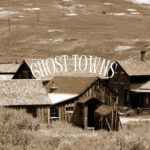 This article originally appeared on Digital Image Magazine by Dan Kosmayer.
This article originally appeared on Digital Image Magazine by Dan Kosmayer.
Cerro Gordo
Location: Keeler, California, USA
GPS: Approximately 36.53778, -117.79500
Cerro Gordo is a historic mining town in Inyo County, California, known for its significant impact on the region’s silver and lead production in the late 19th century. Once bustling with activity, it now stands as a ghost town, offering a glimpse into California’s mining history.
Bodie State Historic Park
Location: Near Bridgeport, California, USA
GPS: 38.21222, -119.01222
Bodie is a well-preserved ghost town in Mono County, California, known for its rich history as a gold mining town in the late 1800s. Now a state historic park, it attracts visitors with its authentic display of buildings and artifacts, encapsulating the boom and subsequent decline of the Gold Rush era.
Centralia Ghost Town
Location: Columbia County, Pennsylvania, USA
GPS: 40.80333, -76.34167
Centralia is renowned for the underground coal mine fire that has been burning since 1962. This fire led to the town’s near-total evacuation and transformation into a ghost town. Once a thriving community, it’s now an area with few remaining structures, where smoke from the ongoing fire occasionally seeps through the ground.
Rhyolite Ghost Town
Location: Near Death Valley National Park, Nevada, USA
GPS: 36.90389, -116.82917
Rhyolite, once rich in quartz-laden ore, rapidly grew after gold discovery in 1904, evolving into a city with a hospital, opera house, and stock exchange. Charles M. Schwab’s investment in 1906 wasn’t enough to save it from the 1907 financial downturn, leading to its desertion by 1916. Now, it’s recognized for its historical remnants and as a film location, notably for the 2005 movie “The Island.”
Silver City Ghost Town
Location: Bodfish, California, USA
GPS: Approximately 35.596986, -118.491306
Silver City Ghost Town in Bodfish, California, offers a unique glimpse into the past. It showcases over twenty historic buildings from local frontier settlements. This museum-like setting captures the essence of historic mining camps in the Kern Valley, offering visitors a journey through time in a non-commercial atmosphere.
Red Oak II
Location: Near Carthage, Missouri, USA
GPS: Approximately 37.212846, -94.277020
This unique attraction, envisioned by artist Lowell Davis, is a reconstructed village that showcases a slice of Americana, complete with historic buildings and artifacts reminiscent of a bygone era. It’s situated northeast of Carthage, Missouri, providing a tangible connection to the past through its meticulously preserved and recreated environment.
Okanogan Highland Ghost Towns
Location: Near Molson, Washington, USA
GPS: 48.98111, -119.20056
The Okanogan Highland Ghost Towns, including Molson, encapsulate a historical narrative of Washington’s early 20th-century mining community. These ghost towns offer a tangible connection to the past, showcasing remnants and artifacts from a bygone mining and settlement life era.
Kennicott Ghost Town
Location: Near Chitina, Alaska, USA
GPS: 61.51909, -142.84149
Kennicott is an abandoned mining camp in Alaska, now preserved as a National Historic Landmark within Wrangell-St. Elias National Park. This once-thriving copper mine offers a glimpse into past mining life and is now a popular destination for history and nature enthusiasts.
Fort Egbert
Location: Eagle, Alaska, USA
GPS: 64.7897, -141.2139
Fort Egbert, established in 1899 near Eagle, Alaska, served as a U.S. Army base during the Klondike Gold Rush and was a pivotal site for the Washington-Alaska Military Cable and Telegraph System. It operated until 1911, and its remnants are preserved under the Bureau of Land Management’s care.
Garnet Ghost Town
Location: Near Drummond, Montana, USA
GPS: 46.82528, -113.33889
Garnet Ghost Town is a well-preserved mining town from the 1890s. Now a historical site managed by the Bureau of Land Management, it offers visitors a glimpse into Montana’s mining past.
Glenrio Ghost Town
Location: Border of New Mexico and Texas, USA
GPS: 35.17889, -103.04222
Once a bustling Route 66 hub, Glenrio thrived with travelers visiting its diners, motels, and gas stations from the 1940s to the 1960s. However, the construction of I-40 in the 1970s redirected traffic, leading to its decline. Despite this, the Glenrio Historic District stands as a monument to its vibrant past, encompassing 17 abandoned structures that echo the town’s once lively atmosphere.
Ardmore Ghost Town
Location: Ardmore, South Dakota, USA
GPS: Approximately 43.01944, -103.65639
Ardmore Ghost Town in South Dakota is a haunting reminder of a thriving community. Established in 1889, this town near the South Dakota-Nebraska border became a ghost of its past, with the gradual departure of its residents following the decline in local agriculture and changes in transportation. What remains of Ardmore is a collection of about 15-25 abandoned structures, silently telling the stories of a bygone era, now just whispers of memory amidst the prairie winds.
Colonel Allensworth State Historic Park
Location: Near Earlimart, California, USA
GPS: 35.86361, -119.38889
The park preserves Allensworth, the only California town founded, financed, and governed by African Americans. Established in 1908, it’s a significant cultural and historical site that reflects a unique chapter in American history and embodies the values and aspirations of its founders.
Elkmont Historic District
Location: Gatlinburg, Tennessee, USA
GPS: Approximately 35.6543, -83.5806
Elkmont Historic District, nestled in the Great Smoky Mountains National Park near Gatlinburg, Tennessee, is a fascinating window into the early 20th-century Appalachian community life. Once a thriving logging town and later a resort community, today it stands as a poignant reminder of the past, offering visitors a chance to stroll through its remaining historic structures and absorb the echoes of its rich history. This area beautifully captures the spirit of an era long gone, preserved amidst the stunning natural beauty of the Smokies.
Deerfield Ghost Town
Location: Orchard, Colorado, USA
GPS: Approximately 40.2911, -104.2583
Deerfield Ghost Town near Orchard, Colorado, represents a significant chapter in American history as a former all-Black settlement. Established in 1910 by Oliver Toussaint Jackson, it was a symbol of hope and prosperity, where the residents, embracing the vision of a self-sufficient community, thrived against the odds. The town’s name, “Deerfield,” reflects the settlers’ deep affection for their new home, viewing the land and community as dear to them. Despite its initial success, the population dwindled due to the harsh economic realities of the Great Depression, leading to its eventual abandonment. Today, Deerfield stands as a poignant historical landmark, with a few original buildings still standing, including a diner, gas station, and Jackson’s home, serving as silent testaments to the resilience of its founders and the importance of preserving African American history in the American West.
Nelson Eldorado Ghost Town
Location: Nelson, NV, USA
GPS: 35.70722, -114.82611
Initially Eldorado, Nelson thrived with early Spanish silver discoveries and subsequent gold finds, leading to intense booms and conflicts, especially over the Techatticup Mine. Active mines into the 1940s and a 1974 flash flood mark its history. Preserved buildings now attract photographers and filmmakers.
Eckley Miners’ Village
Location: Near Weatherly, Pennsylvania, USA
GPS: 40.99333, -75.86278
Eckley Miners’ Village, located in Foster Township near Hazleton, Pennsylvania, is a preserved anthracite coal mining town now serving as a museum. Established by the Pennsylvania Historical and Museum Commission, it showcases the life and times of the mining community. The village, with buildings dating back to the 19th century, provides insight into the coal mining industry and the lives of its workers.
Burke Ghost Town
Location: Near Wallace, Idaho, USA
GPS: 47.52028, -115.82028
Burke, once a bustling mining town in Shoshone County, Idaho, is now a ghost town with a rich history, including its peak during the silver mining boom and involvement in labor conflicts. Its unique geography in a narrow canyon led to distinctive town planning, with structures built tightly alongside the railway and creek.
Erie Street, Historic Lowell
Location: Bisbee, Arizona, USA
GPS: 31.42778, -109.89361
Erie Street epitomizes the historic essence of Lowell, now part of Bisbee, Arizona. It showcases a snapshot of its mining town heritage with well-preserved architectural and cultural elements.
Nevadaville Ghost Town
Location: Near Central City, Colorado, USA
Nevadaville, once bustling with around 4,000 residents during the late 1800s gold rush, now stands as a ghost town with remaining historic buildings and mines. It’s just up the hill from Central City, accessible via Nevadaville Road.
Jerome Ghost Town
Location: Jerome, AZ
Description: Perched high on Cleopatra Hill overlooking the Verde Valley, Jerome Ghost Town is an intriguing testament to Arizona’s boom-and-bust mining history. Once known as the “Wickedest Town in the West,” this settlement was a bustling hub of activity, extracting vast quantities of copper, gold, and silver. Following the closure of the mines, Jerome transformed from a near-abandoned ghost town to a vibrant artist community, its population swelling and dwindling in tune with the fluctuating market for copper. Today, it retains a rich tapestry of history meshed with creative spirit, offering visitors a unique blend of old and new. Historic buildings, once teetering on the brink of decay, now house galleries, shops, and cafes, while remnants of its mining past continue to fascinate those who wander its steep, winding streets. Jerome’s dramatic history, stunning views, and artistic flair make it a captivating destination, inviting exploration of its storied past and lively present.
Custer Ghost Town
Location: Near Stanley, Idaho, USA
GPS: 44.38750, -114.69583
Custer Ghost Town, established in 1877 and now part of Land of the Yankee Fork State Park, reflects Idaho’s rich mining history. The site includes contributing buildings that maintain their historical integrity.
Berlin Mining Ghost Town
Location: Nye County, Nevada
Description: The Berlin Mining Ghost Town, named by German prospectors in the 1880s, encapsulates a unique natural and cultural history blend. This company town flourished briefly with the extraction of gold, creating a bustling community in the heart of Nevada. However, by the 1910s, following strike actions and the subsequent mine closure, Berlin was largely deserted, leaving behind well-preserved structures that whisper tales of its past. These historical remnants are now integral to the Berlin-Ichthyosaur State Park, an area significant for its mining heritage and as a site of paleontological importance, showcasing fossils of the ancient marine reptile, the Ichthyosaur. Today, the ghost town and its surrounding park serve as a fascinating window into the geological past and the era of hard rock mining, inviting visitors to explore its dual legacy, where echoes of the old mining life meet the silent, fossilized remains of a world long gone.
Bannack Mining Ghost Town
Location: Bannack, MT, USA
GPS: 45.16111, -112.99556
Bannack is a ghostly relic of Montana’s Gold Rush era, once infamous for lawlessness and its allegedly outlaw sheriff. Featured on Travel Channel’s Ghost Adventures, it captivates paranormal enthusiasts and history buffs. Although deserted by the 1950s, over 50 original buildings from the 1800s endure, inviting exploration within this state park that echoes this once-thriving mining town’s tumultuous and intriguing past. This historic ghost town, now a state park, showcases preserved buildings from its gold rush era, offering a glimpse into the past with guided tours and annual events that bring its history to life.
Abandoned Town of Cairo, Illinois
Location: Cairo, Illinois, USA
GPS: 37.0100, -89.1800
Cairo, Illinois, positioned at the confluence of the Mississippi and Ohio Rivers, now stands largely abandoned, echoing the remnants of its once-thriving past. Once a flourishing trade center, Cairo, Illinois, has significantly declined over the years, leading to extensive abandonment. Its strategic location at the convergence of two significant rivers couldn’t prevent economic downturns, racial tensions, and subsequent depopulation. Today, Cairo is a poignant symbol of urban decay, with deserted streets and vacant buildings. Yet, it retains a rich historical tapestry that echoes its former prosperity and pivotal role in American history.
Calico Ghost Town
Location: Yermo, California, USA
GPS: 34.94889, -116.86417
Once a thriving silver mining town, Calico has been preserved as a county park. Founded in 1881, it became a ghost town after the silver market crashed. Today, it’s a historical landmark restored to reflect its 1880s heyday, offering visitors a glimpse into the past with various attractions, including mine tours and a historical railroad.
Harrisburg Ghost Town
Location: Washington County, Utah
Description: The tale of Harrisburg Ghost Town begins with its settlers, led by Moses Harris, who, after a devastating flood in 1862, moved upriver to establish this new community. Despite their efforts, the town’s existence was fraught with challenges, including relentless droughts that impeded their ability to sustain the settlement. By 1895, Harrisburg had mainly been forsaken, and its once hopeful populace dwindled, leaving behind a scattering of structures whispering stories of a bygone era. With Interstate 15 cutting through its heart, Harrisburg’s remnants are silent witnesses to its past. The Orson B. Adams Home is the town’s most enduring landmark, meticulously preserved and restored by the Bureau of Land Management. It serves as a tangible connection to the town’s fleeting chapter in history, embodying its early settlers’ resilience and transient dreams.
Nevada City Ghost Town
Location: Nevada City, Montana
Description: Nevada City, once on the brink of becoming a forgotten relic of the gold mining era, was revitalized through the passionate efforts of the Bovey family between 1945 and 1978. Their dedication to restoring its classic wooden structures has transformed this town into a vibrant open-air museum, capturing the essence of the period with remarkable authenticity. Today, visitors can wander through this resurrected ghost town, especially during summer weekends when live historical interpretations bring the past vividly to life. Inside the well-preserved buildings, an array of vintage music boxes and player pianos awaits, offering a musical glimpse into yesteryear. Nevada City is a testament to the enduring fascination with the Old West, preserved as static relics and interactive portals to a bygone era, inviting exploration and appreciation of Montana’s rich historical tapestry.
Grafton Ghost Town
Location: Near Rockville, Utah, USA
GPS: 37.16722, -113.08000
Grafton is recognized as a ghost town situated just south of Zion National Park in Utah. Known for being one of the most photographed ghost towns in the West, it has been a backdrop for several films, including the iconic “Butch Cassidy and the Sundance Kid.”
Castle Dome City Ghost Town
Location: Castle Dome, AZ
Description: Castle Dome City Ghost Town, set in Arizona’s rugged landscape, is a monumental relic of the mining boom of the mid-1800s, showcasing an expansive array of 80 buildings and remnants of 300 mines, though caution is advised as not all are safe to explore. This extensive site has been meticulously curated to represent the once-flourishing settlement, with most structures being reconstructions that pay homage to the original gold and silver mining claims. The history embedded within its bounds is nothing short of dramatic, highlighted by an 1863 incident where a mine owner survived a brutal attack by 180 Apaches, only to be abandoned in an arroyo, suffering dire injuries and a gruesome fate. The ensuing saga included a sequence of turbulent events encompassing an opium overdose, a daring stagecoach robbery, and a tragic attempt to halt a lynching. Beyond these gripping tales, the town boasts a dazzling $800 million wall of fluorescent minerals and a history with a doomsday cult seeking refuge within its confines during winter. The layers of stories and the rich historical tapestry make Castle Dome City Ghost Town an enthralling destination, promising a journey through time that’s as educational as it is thrilling.
Batsto Village
Location: Washington Township, Burlington County, New Jersey, USA
GPS: 39.64167, -74.64778
Batsto Village is a historic Pine Barrens village, now a preserved site within Wharton State Forest, showcasing New Jersey’s iron industry’s past and encompassing over 40 sites and structures.
Independence Ghost Town
Location: Independence, Colorado
Description: Independence Ghost Town in Colorado is a captivating portal to the past, rooted in the late 1800s when gold discoveries triggered a rush of prospectors eager to find their fortune. This burgeoning settlement quickly escalated into a bustling town, especially after the Farwell Mining Company, by 1881, had taken over and operated the area’s significant mines, bringing employment and prosperity to hundreds. With a population soaring to approximately 1,500 residents, Independence was alive with thriving businesses and a vibrant community spirit. However, as the mining prospects dwindled, the residents departed to pursue new opportunities, gradually abandoning the town. The Aspen Historical Society began preserving the ghost town’s remnants around 1975, ensuring that the echoes of its once lively existence remained accessible. Today, visitors are invited to meander through the preserved ruins on a self-guided tour available during the summer months, offering a tangible connection to Colorado’s spirited gold rush era and the cycles of boom and bust that shaped the West.
Thurmond, West Virginia
Location: Fayette County, West Virginia, USA
Historically significant for its role in coal mining and the railroad industry, Thurmond is now a part of the New River Gorge National Park and Preserve. This town, primarily owned by the National Park Service, is a window into the early 20th-century Appalachian coal town life, with its entire village designated as a historic district.
St. Elmo Ghost Town
Location: St. Elmo, Colorado
Description: St. Elmo, founded in 1880, encapsulates the fleeting dreams of prosperity that once echoed through the Colorado Rockies. This ghost town was a flourishing gold and silver mining community, drawing in around 2,000 people eager to stake their claim in the promise of wealth. However, as the 20th century dawned, the once-abundant mines depleted, leaving the town deserted. Legend has it that the residents went on the last train from St. Elmo, leaving their past lives behind, as whispered by local lore. Present-day St. Elmo offers a poignant glimpse into the past, with its remarkably preserved homes and storefronts inviting visitors to wander through the historical tapestry of this once-thriving town. The general store, operational during the warmer months, provides a tangible link to the town’s bustling days, allowing guests to step back in time and experience a slice of Colorado’s rich mining heritage.
Thistle Ghost Town
Location: Near Fairview, Utah, USA
GPS: 39.99139, -111.49833
Thistle was once a flourishing town, but in 1983, a massive landslide caused a damming of the Spanish Fork River, leading to the town’s inundation and eventual abandonment. Today, the remnants of Thistle serve as a stark reminder of nature’s power, with the site visible from nearby highways.
Nevada City Ghost Town
Location: Nevada City, Montana
GPS: 45.294300, -112.001200
Description: Nevada City, once on the brink of becoming a forgotten relic of the gold mining era, was revitalized through the passionate efforts of the Bovey family between 1945 and 1978. Their dedication to restoring its classic wooden structures has transformed this town into a vibrant open-air museum, capturing the essence of the period with remarkable authenticity. Today, visitors can wander through this resurrected ghost town, especially during summer weekends when live historical interpretations bring the past vividly to life. Inside the well-preserved buildings, an array of vintage music boxes and player pianos awaits, offering a musical glimpse into yesteryear. Nevada City is a testament to the enduring fascination with the Old West, preserved as static relics and interactive portals to a bygone era, inviting exploration and appreciation of Montana’s rich historical tapestry.
Iosepa Ghost Town
Location: Near Grantsville, Utah, USA
GPS: 40.54194, -112.73389
Iosepa is a historical ghost town in Skull Valley, once home to a community of over 200 Polynesian members of the LDS Church, existing from 1889 to 1917. Now, it is noted for its annual Memorial Day gatherings and is recognized for its significant contribution to Utah’s Polynesian heritage
Terlingua Mining Ghost Town
Location: Terlingua, TX
Description: Terlingua, renowned as one of the grand quicksilver (mercury) mining towns, reached its zenith in the 1930s, becoming a national leader in quicksilver production. The once-thriving town, energized by its bustling mining operations, faced a dramatic downturn in the 1940s when the principal mining company declared bankruptcy, leading to a mass exodus of its inhabitants. Despite its decline, Terlingua has experienced a remarkable revival. Newcomers, drawn by its rich history and unique landscape, have breathed new life into the once-desolate ghost town, transforming it into a vibrant community that honors its past while welcoming visitors with a lively spirit. The town’s resurgence has made it a compelling destination, offering a mix of historical exploration, stunning natural beauty, and a sense of renewed vitality. Today’s Terlingua is a testament to resilience, balancing its storied past with a fresh, dynamic present, inviting explorers to experience its unique charm and legacy.
Custer Ghost Town
Location: Near Challis, Custer County, Idaho, USA
GPS: 44.38750, -114.69583
Custer, a historic gold mining town nestled in Idaho’s Challis National Forest, hit its population peak in 1896. It featured a large stamp mill, numerous saloons, and a bustling Chinatown. Despite thriving briefly, the town was deserted by 1911, leaving behind well-preserved structures that visitors can explore today, including a schoolhouse turned museum. Recognized for its historical significance, Custer was listed on the National Register of Historic Places in 1981
Old Cahawba Archaeological Park
Location: Cahawba, AL, USA
Old Cahawba, Alabama’s inaugural state capital until 1825, is now an archaeological park where history intertwines with nature. Positioned at the confluence of two rivers, it witnessed the town’s rise, subsequent decline post-capital relocation, and the adversities of flooding. Today, it commemorates its diverse past, from early Native American inhabitants to its post-Civil War freedmen community. Visitors can explore the remnants of this once-thriving town, including a mysterious garden maze known for its ghostly ‘orb’ sightings.
South Pass City Gold Mining Ghost Town
Location: South Pass City, Wyoming
Description: South Pass City is a hauntingly beautiful relic of the Gold Rush era, set against the backdrop of Wyoming’s wild landscapes. Established in the mid-19th century during the gold boom, this town quickly grew into a bustling settlement, teeming with miners, entrepreneurs, and adventurers all seeking fortune. At its zenith, the streets of South Pass City were lined with businesses, saloons, and a diverse populace. Still, as the gold veins depleted, the town slowly faded into obscurity, leaving behind a ghostly imprint of its former self. Today, it is one of the most authentic and well-preserved ghost towns in the American West, offering a vivid snapshot of frontier life. Visitors can explore over thirty original structures that remain virtually untouched by time, providing a rare, immersive experience of the gold mining era’s hopes, hardships, and daily realities. The town not only offers a silent narrative of the quest for prosperity but also serves as a poignant reminder of the transient nature of boomtowns.
Santa Claus Ghost Town
Location: Santa Claus, AZ, USA
GPS: 35.33667, -114.21639
Nestled in the heart of the Mojave Desert, Santa Claus, Arizona, seems like an unlikely place for the holiday cheer of the North Pole to flourish. However, this now-abandoned town embraced the Christmas spirit with open arms. Founded in 1937 by realtor Nina Talbot, Santa Claus was intended to lure buyers to the desert with its festive charm. Despite its initial popularity among tourists, who flocked to see the Christmas-themed buildings and even send mail from its post office, the town struggled to attract permanent residents. As the iconic Route 66 declined, so did Santa Claus, and eventually, the once-jolly atmosphere faded away. Today, remnants of Santa Claus’s festive past still linger in the form of rundown red-and-white buildings and faded tinsel. While the town may no longer be maintained, curious visitors can explore its ghostly remains and imagine the holiday magic that once filled its streets.
Goldfield Gold Rush Mining Camp
Location: Goldfield, NV
GPS: 37.708300, -117.234900
Description: Nestled in the arid expanse of Nevada, Goldfield Gold Rush Mining Camp is a poignant relic of the early 20th century’s mining fervor. Once a bustling epicenter of wealth and optimism, Goldfield was synonymous with the gold rush dreams, attracting a swarm of adventurers and opportunists. Its streets, once lined with grandeur and the restless spirit of the gold-seekers, now host a silent tableau of decay and desertion. The remaining structures, including the weathered facades of banks, saloons, and the infamous Goldfield Hotel, stand as a haunting monument to its brief heyday, offering a frozen glimpse into a once-thriving town turned ghost town, echoing the transient pulse of history and the inevitable cycle of boom and bust.
Goldfield Ghost Town
Location: Goldfield, AZ
Description: While several places are known as Goldfield Ghost Town in the U.S., the one in Arizona’s Superstition Mountains offers a unique blend of historical allure and lively entertainment. Unlike the typical deserted ghost towns that evoke a sense of quiet ruin, this Goldfield is buzzing with activity. The latest thrill? A zipline that adds a modern twist to the old-world charm. Visitors can delve into history with tours of a century-old mine, enjoy rides on a narrow gauge railroad, and even experience the chills of a walking ghost tour under the moonlit sky. Seasonal historic gunfights recreate the Wild West’s chaotic disputes over Wells Fargo treasures. At the same time, gold-panning activities and conversations with a character at Lu Lu’s Bordello offer a slice of the bygone era. It’s a place where the past meets the present, making it an exciting educational outing for the whole family. Here, history is not just told but vividly brought to life, ensuring that every visitor leaves with lasting memories and a deeper connection to the pioneering spirit of the Old West.
Steins Ghost Town
Location: Hidalgo County, New Mexico
Description: Named after U.S. Army Major Enoch Steen, Steins Ghost Town in New Mexico encapsulates the spirit of the Old West, its origins tied to the 1880s’ flurry of gold, silver, and copper mining. The town saw a surge in activity and growth, further spurred by establishing a rock quarry in 1905, which provided essential ballast for the expanding railway lines. However, the quarry’s closure in 1925 initiated Steins’ gradual descent into obsolescence, a process hastened when the essential railroad—also the town’s lifeline for water—ceased operations in 1944, compelling the last inhabitants to leave. Despite its abandonment, Steins has experienced intermittent rebirths as a tourist attraction since 1988, allowing visitors to wander among its surviving structures and immerse themselves in the echoes of its once-bustling streets, offering a tangible connection to the adventurous, dynamic spirit that once defined this remote desert outpost.
Shakespeare Ghost Town
Location: Lordsburg, New Mexico
Description: Shakespeare Ghost Town has lived through multiple incarnations, each echoing the rich tapestry of New Mexico’s history. Known initially as Mexican Springs, it was a pivotal relay station post-Civil War, then briefly renamed Grant. The discovery of silver in 1870 transformed it into Ralston City, flourishing under the patronage of financier William Ralston. Its population once swelled to 3,000, thriving until the silver veins ran dry, leading to its decline. The town’s near-deserted state 1879 saw a revival attempt by Colonel William G. Boyle, who rechristened it Shakespeare. The city enjoyed a brief resurgence in mining, becoming the backdrop for wild western stories. It reportedly hosted Billy the Kid and witnessed the hanging of outlaws “Russian Bill” Tattenbaum and Sandy King for their infamous deeds. Despite a momentary sparkle, Shakespeare couldn’t sustain its luster, overshadowed by the growth of a new town nearby and the railway’s advent. Eventually, the once-thriving settlement was purchased and preserved by the Hill family, and now a National Historic Site embodying the spirit of the Old West, maintained by the Shakespeare Foundation.
Aurora Ghost Town
Location: Hawthorne, Nevada
Description: Aurora Ghost Town, nestled near Hawthorne, Nevada, encapsulates the fleeting epochs of mining prosperity and subsequent decline. Founded in 1860, this town quickly became a bustling hub during the Nevada silver boom, with its population peaking as prospectors, miners, and entrepreneurs flocked to capitalize on its rich ore deposits. The town was vibrant, with businesses, homes, and lively saloons, embodying the quintessential boomtown spirit. However, as the veins of silver and gold were exhausted, Aurora’s shine dimmed, leading to its abandonment by the early 20th century. Today, the ghost town stands as a silent testament to the cyclical nature of mining towns, with its remaining structures and desolate ambiance offering a poignant glimpse into a once-thriving community. Visitors to Aurora can explore the echoes of its past, where the hopes of fortune and the realities of transient boom cycles are palpably intertwined in the silent ruins.
© Dan Kosmayer. All images and content are protected. View more fine art photography and articles at Digital Image Magazine.Croatia Roof Tiles 9 Mar 2024 12:52 PM (last year)
This article originally appeared on Digital Image Magazine by Dan Kosmayer.
Heading up to Dubrovnik’s city walls, I was all geared up for the quiet hush of January, a stark contrast to the usual buzz. Despite battling the tail-end of flu and bronchitis, I was drawn by the sheer allure of capturing the city’s serene beauty through my lens, in particular I wanted to photograph the Croatia roof tiles. The climb was challenging, with the walls towering imposingly and the steps stretching steeply upwards, but the promise of the panoramic views spurred me on.
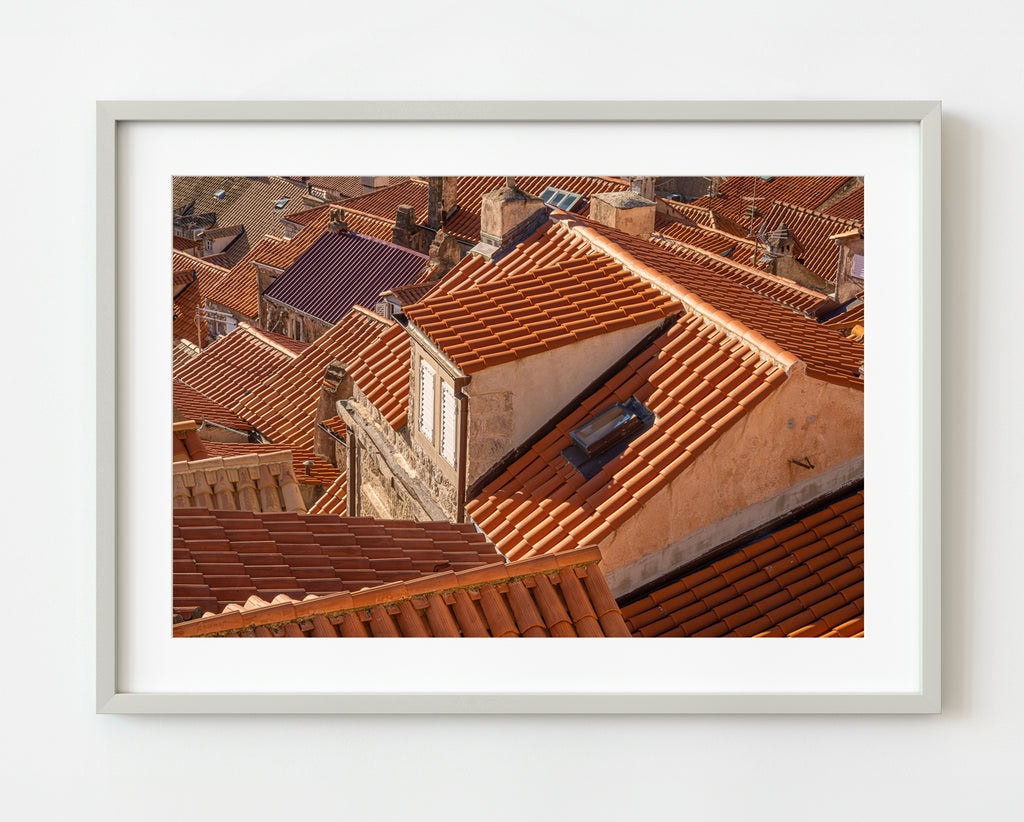
The admission fee of 35 euros felt like a small price for the rich experience awaiting at the top. This fee contributes to preserving the walls, ensuring that this magnificent historical treasure continues to inspire awe for generations to come – and it was well worth it!
Finally standing atop Dubrovnik’s ancient walls, enveloped in the serenity of the off-season, an overwhelming sense of peace struck me. The panoramic view, a breathtaking tapestry of the Croatia roof tiles against the tranquil Adriatic, was more than just a sight; it was a profound experience. The scene’s serenity, with the gentle whisper of history echoing through the empty streets below, offered a rare, unspoken promise of tranquility and beauty that lingered long after the moment had passed.
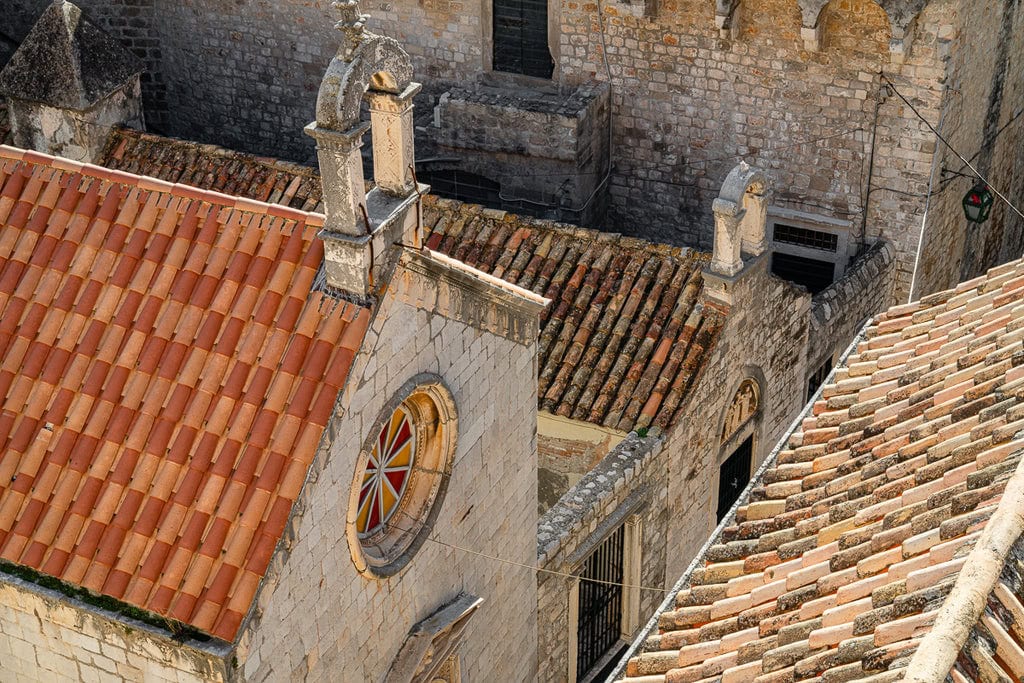
Reaching the summit, the vast expanse of Dubrovnik unfolded below me, a breathtaking mosaic of red and orange Croatia roof tiles encircled by the tranquil Adriatic Sea. The calmness of the scene was mesmerizing, especially in the gentle embrace of the off-season’s mild sunlight. There’s something incredibly peaceful about overlooking a usually bustling city, now lying quiet and almost reflective.
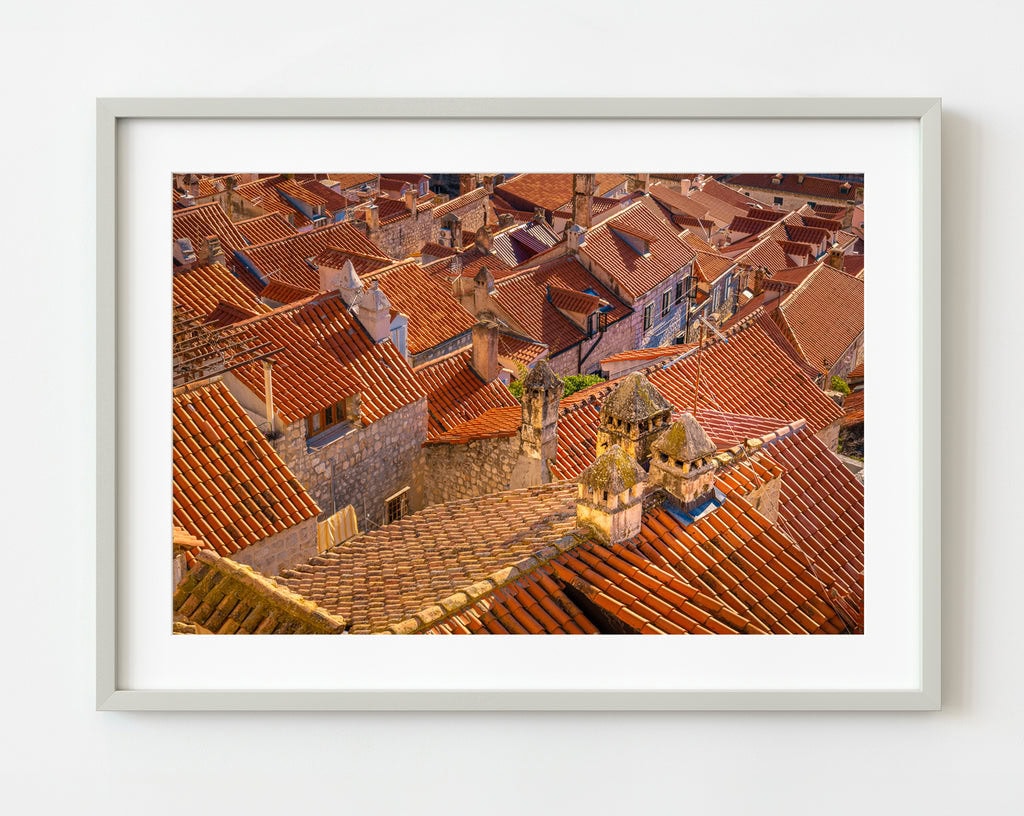
Interestingly, the usually crowded walls had just one other pair of visitors—a couple from the USA. It struck me how the off-season had transformed this typically bustling tourist spot into a near-private viewing platform. Sharing this vast, majestic view with just two other souls felt like we had stumbled upon a secret, an exclusive glimpse into the city’s off-season persona.
I lingered until the sky began to hint at sunset, immersing myself in the shifting light and the stillness. The experience was soul-stirring, offering a blend of solitude, beauty, and personal accomplishment. With its historic walls and vibrant rooftops, the city shared a silent story, a narrative of resilience, beauty, and the passage of time.
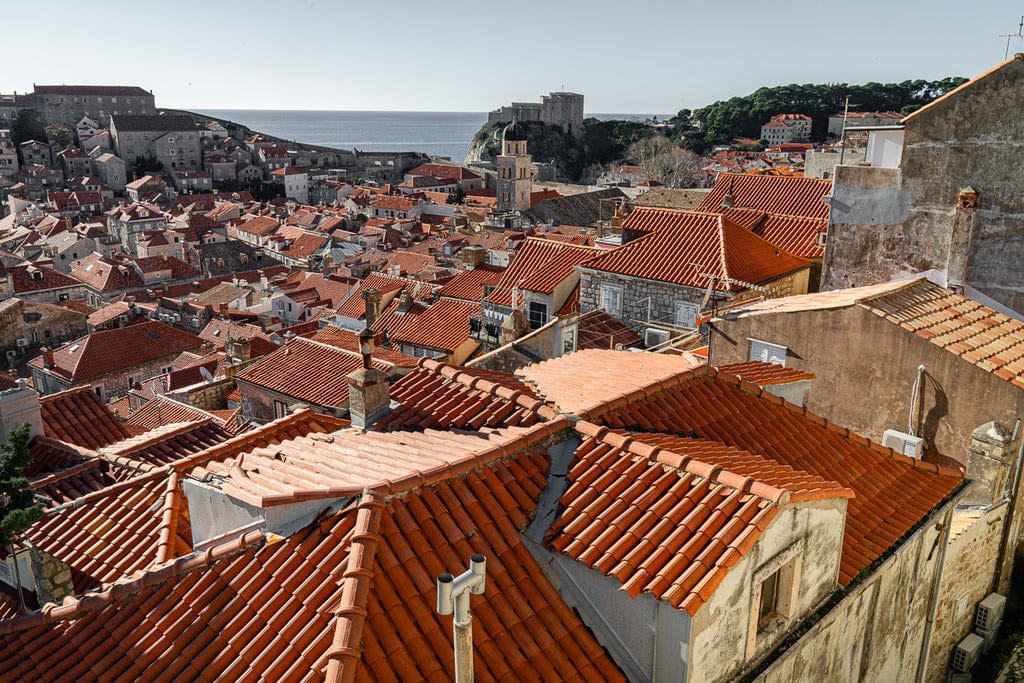
This visit wasn’t just about capturing the visuals; it was a profound connection with a place, a moment when everything else fell away, leaving just the raw beauty of Dubrovnik and a shared moment of quiet awe. It was a reminder of the unique stories places hold, revealed only to those who seek them out, especially in the stillness of the quieter months.
© Dan Kosmayer. All images and content are protected. View more fine art photography and articles at Digital Image Magazine.
Fine Art America Print Quality: A Review 7 Mar 2024 11:12 AM (last year)
 This article originally appeared on Digital Image Magazine by Dan Kosmayer.
This article originally appeared on Digital Image Magazine by Dan Kosmayer.
Considering selling your art online? Here’s an honest look at what you can expect from Fine Art America’s print quality—compared to handcrafted options like mine at Dan Kosmayer
Fine Art America: A Peek
Imagine walking into a vast virtual gallery where the walls go on forever. That’s Fine Art America for you—a massive marketplace with art from thousands of artists worldwide. It’s like an art fair that never ends, available at your fingertips 24/7. The convenience is unbeatable. Want a cityscape for your office or a landscape for your living room? It’s all there, waiting to be found. Fine Art America has art prints for every taste.
Plus, there are canvas prints for decorative and personalized options. While Fine Art America has a ton of art, you should consider print quality and authenticity when choosing your art.
Fine Art America is a print-on-demand site, which means the artwork is printed by FAA’s facilities, not the artists themselves. This means there’s a disconnect between the artist and the final product. Artists upload their designs, and the FAA handles printing and shipping.
While this model is efficient and offers many options, it lacks the artist’s personal touch and direct control. The artwork is mass-produced without the individual attention or intention the artist had for their piece, so it’s more of an impersonal, mass-produced product.
Fine Art America: Quality Considerations for Fine Art Prints
Some customers have reported good experiences, while others have noted several issues with Fine Art America (FAA) prints, which buyers need to consider. There are mixed opinions on whether Fine Art America is good for customers, artists or photographers.
One of the main issues reported is the inconsistency in print quality.
This can be a big problem for art collectors who expect consistent reproduction across all their purchases. This inconsistency affects not only the visual appeal but also the value of the art.
Fine Art America reviews and complaints reflect this mixed feedback. Some customers love the site, while others complain about the product and customer service.
Color accuracy is another issue customers have reported. Some have received prints where the colors didn’t match the online preview.
Here for example is an complaint from a Fine Art America customer on the Better Business Bureau’s website:
“Fine Art America did a print job for me and all of the items in my order were printed with the wrong colors (I got a ** Flag with hot pink stripes instead of red stripes).”
This can be due to various reasons, such as screen calibration and the printing process, and the artwork can look faded, oversaturated, or just different from the original color. This is especially important for fine art prints, where color vibrancy and accuracy are critical to the overall impact.
The detail and clarity of the printed image are also under the microscope. Art lovers and collectors want prints that capture the subtleties and sharpness of the original piece. However, some customers have found their prints need improvement in this regard, with issues like blur or loss of detail, which can detract from the enjoyment and authenticity of the art.
Issues with printed materials, like paper, have also been raised. The substrate on which the art is printed can significantly affect the look and longevity of the print. Inconsistent material quality can also affect the print’s appearance and durability and cause premature fading or wear.
Print resolution is vital so that the final product matches the original artwork. Low-resolution prints can result in a lack of sharpness, pixelation, or overall loss of visual quality, and buyers are disappointed because they expect a high-quality reproduction.
Framed prints have also been criticized for their cost and time required to obtain. However, customer reviews often mention the quality and service of framed prints from different companies.
These are the reasons why quality control is important, and buyers should be aware of the print-on-demand services they use. High-quality prints are vital to maintaining the trust and satisfaction of art collectors and enthusiasts who rely on these platforms to buy art.
While Fine Art America has many products, it may need to be better for enthusiasts who want high-quality art. If you wish for authenticity and excellence in your prints, buy directly from the photographer.
The Dan Kosmayer Way
In fine art photography, my approach is what I call “The Dan Kosmayer Way,” where I treat every detail like a master craftsman; everything is perfected like an artisan who makes custom, handcrafted pieces. Each wall art photograph I produce is a testament to this artisanal approach, personal and high quality – the opposite of the mass-produced approach of Fine Art America, where the art is printed on demand and often without the artist’s direct involvement or oversight.
Unlike other artists who struggle to stand out on these platforms, my process is hands-on and involved, and I guarantee each print meets the highest quality standards. This is backed up by the 5-star reviews from my customers at my Etsy store, The Kosmayer Gallery. This level of detail and care in my work means the product is both high quality and personally signed and comes with a certificate of authenticity and actual personal hands-on artistry.
My website allows me to control the sales process, maintain my artistic integrity, and connect directly and personally with my audience.
Browse the most extensive single-artist collection worldwide, with over 2,500 fine art pieces. Each image is a moment in time, carefully curated and shot to bring beauty, emotion, and perspective into any space.
Dive into this gallery and explore Dan Kosmayer’s Photography Prints, where every photograph is a story waiting to be told. Buying art from me is to buy a piece created with intention, passion, and authenticity. Every photograph in my collection is an original from countless hours spent in the field, experiencing the world and capturing its beauty through my eyes. This hands-on process means when you buy a piece from my collection, you’re not just buying a print but a piece of the world as seen and rendered by an artist. 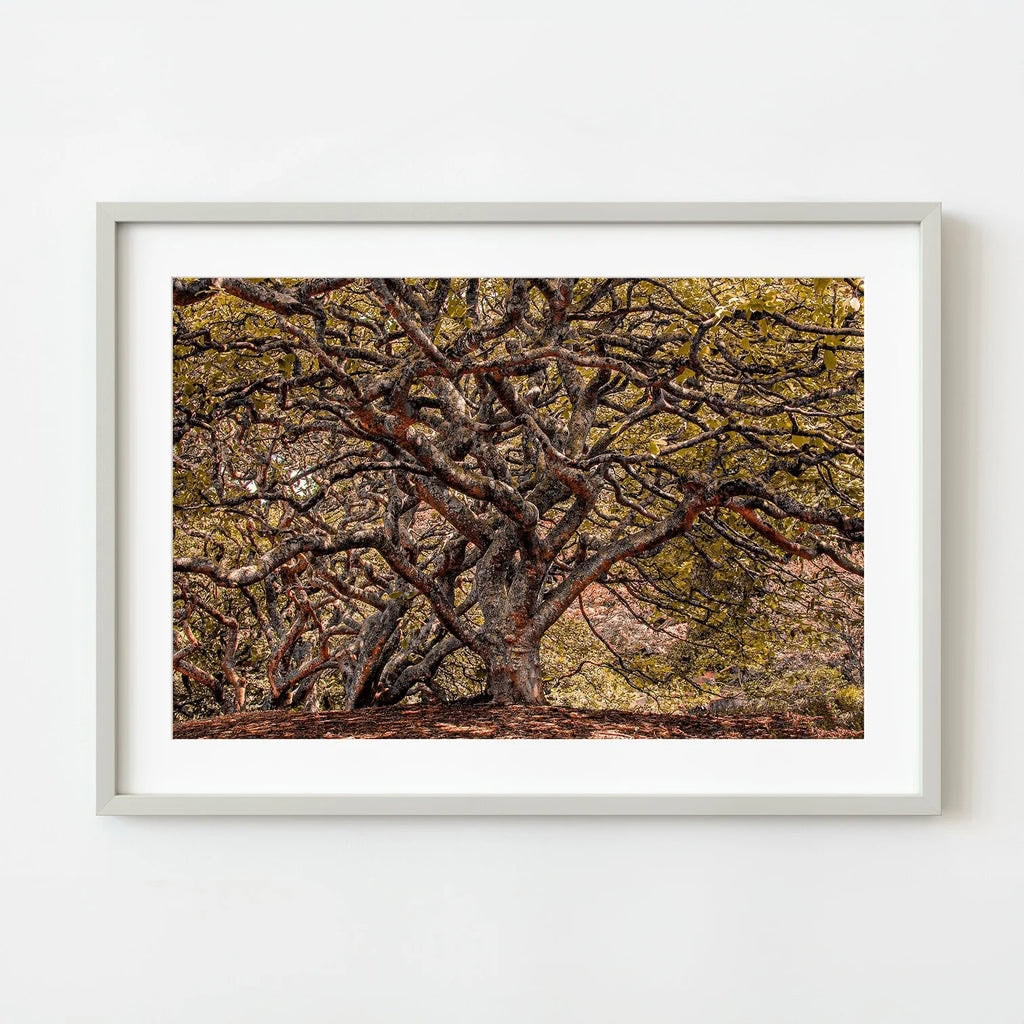
When you compare my prices to Fine Art America, you’ll see that both platforms cater to a broad audience and provide value. My pricing is designed to reflect the quality, exclusivity, and personal involvement in each piece and is competitive with the market, including what you find on Fine Art America. The difference is each piece’s individual experience, authenticity, and quality; the investment is not just in the art but in the connection. By having my website, I can offer my customers a more personalized and direct buying experience.
In addition to the art, I offer free worldwide shipping, so these windows to the world are available to anyone, anywhere, without extra cost. My 30-day money-back guarantee is my promise of the quality of my work and the joy it will bring to your life, and it is my commitment to your happiness with every piece.
You’re not just buying a photograph when you buy a piece from my collection. You’re buying a slice of the world through a lens driven by passion and a never-ending pursuit of the perfect shot. It’s an invitation to buy a piece of art that speaks of quality, authenticity, and the human touch of an artist deeply involved in his craft.
Whether for your personal space, as a gift or as part of your collection, my photographs are more than just images; they are moments in time waiting to resonate and inspire in their new home with you. Among my offerings, you’ll find a wide range of wall art that adds elegance and a personal touch to any space.
Want to see what museum-quality, signed art prints look like? Explore my full print collection here.
© Dan Kosmayer. All images and content are protected. View more fine art photography and articles at Digital Image Magazine.Cutty Sark Rigging 28 Feb 2024 7:27 AM (last year)
This article originally appeared on Digital Image Magazine by Dan Kosmayer.
The Cutty Sark: Rigging, Art, and a Timeless Story
When you stand in front of the Cutty Sark in Greenwich, London, something about her masts and rigging draws you in. As a photographer, I find myself fascinated by these details – the lines, the geometry against the sky, and the history in every rope. So, I decided to capture the essence of this iconic clipper not by climbing her masts but by freezing the magic of her rigging through my lens. This isn’t just any old ship; it’s a time machine, a tribute to human innovation, and a piece of art for your wall.
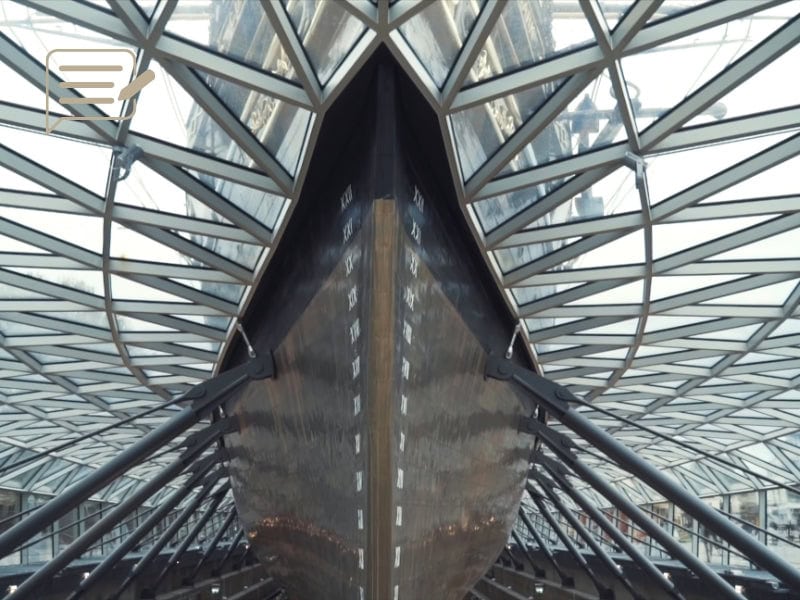
Rigging of Cutty Sark
Let’s get into the rigging – those carefully threaded lines that rise like a beautiful spider’s web into the London sky. The rigging of the Cutty Sark is the very skeleton of seafaring adventure. Every line has a purpose – to raise the sails, secure the masts, and guide the ship across rough seas. When photographing these elements, I want to capture the look and meaning. This rigging tells the stories of the winds, the waves, and the sailors who once climbed to great heights – their hands rough from the ropes, their eyes on the horizon.
Cutty Sark Rigging: A Living Piece of Maritime History
The Cutty Sark rigging is more than a museum exhibit – it’s the lifeblood of this iconic ship, once the fastest of her kind. My aim with these fine art prints is to capture that feeling and turn it into something you can hold in your own space. You don’t need to climb the ratlines or feel the ship’s motion to understand her history; the ship speaks through these images. With all its complexity, the Cutty Sark rigging is a part of the ship’s story.

Architecture Against the Cutty Sark
Now, the Cutty Sark was built for speed, her lines and masts designed to slice through the waves. But what I love most is the rigging – complex, almost architectural in its design. The lines cross and weave against the Cutty Sark in Greenwich. Photographing these angles is like deciphering an ancient code, each line taut, each knot a badge of craftsmanship. In my photography, I try to capture this – history against modernity, function turned into art. The rigging is prominent in my fine art prints; with its interplay of light and shadow, it invites you to explore, dream, and imagine what it must have been like when the sails were full of wind and the ship was flying across the ocean.
Timelessness of the Rigging
I think what’s most captivating is the timelessness of it all. The rigging hasn’t changed since the ship first set sail in 1869. When I stand beneath the masts of the Cutty Sark in Greenwich, camera in hand, I can almost hear the shouts of the sailors and feel the energy of a living ship. This rigging, this incredible web of lines and pulleys, connected the continents, bringing tea from China and wool from Australia. Capturing the rigging is my way of paying homage to those journeys – of freezing a moment from an era when ships like the Cutty Sark were the fastest way to cross the world. The ship’s beautiful hull, supported by the rigging, is the very definition of the fastest ship of her time.

Royal Museums Greenwich
The Cutty Sark is part of the Royal Museums Greenwich, a museum collection that preserves the UK’s maritime heritage. This London landmark allows you to see the ship and hear the stories she tells. The Royal Museums Greenwich ensures the Cutty Sark and her masts and history continue to inspire and educate visitors worldwide. You can get close to the ship’s hull and rigging to learn more about maritime history. Visit Royal Museums Greenwich and see the Cutty Sark in all her glory.
Journey into the heart of maritime history with my exclusive collections. Explore the soulful Ship Photography, discover the intricacies in Sailboat Rigging Photos, and embrace the essence of the sea with Maritimes Photography. Each image captures a unique piece of nautical artistry, crafted for those who live and breathe the ocean’s call.
The History of the Cutty Sark’s Long Career
Cutty Sark’s long and storied career is proof of her being the fastest ship of her time. She was famous for her speed and ability to deliver cargo worldwide. This historic ship was once part of the tea trade, connecting the continents, and her masts and rigging are a symbol of maritime magnificence. As part of the Royal Museums Greenwich, she is now a preserved piece of history so you can imagine her journeys. Her place at Royal Museums Greenwich keeps her legacy alive so you can appreciate her part in maritime history.

The Masts and the Rig Climb
The masts of the Cutty Sark rise above, giving you a sense of her size and purpose. Today, you can experience the thrill of a rig climb on the Cutty Sark and see Greenwich and the Thames from a new perspective. The rig climb takes you up the ship’s ratlines to the top platform for an unforgettable view of this London landmark. This London adventure allows you to get physically involved with history, climb where the sailors climbed, and see the city from a new angle. The controlled descent from the rigging is another part of the rig climb experience, so you can feel the adventure of being on a true London icon.
Royal Naval College and King William Walk
Located near the Royal Naval College, the Cutty Sark is a must-see. King William Walk is a beautiful walkway to this London landmark. The Royal Naval College, alongside the National Maritime Museum, adds to the historic context of the Cutty Sark and its masts.

Maritime Poetry in Rigging and Lines
For me, there’s an aesthetic to maritime history that’s timeless. The ropes coiled with precision, the lines that cut through the air – it’s all a kind of poetry, albeit practical. It’s these small, purposeful details that turn a ship into something more – something worth preserving and celebrating. In my photographs, this rigging is about more than the mechanics of sailing; it’s about humanity’s endless desire to explore and discover. I like to think my fine art prints do more than show – they inspire.
Take the Cutty Sark Rigging Home
The Cutty Sark rigging is a reminder of a time when adventure was measured by the height of your mast and the wind in your sails. I want to bring that sense of adventure into your home through my work. A piece that doesn’t just hang on the wall but talks to you every time you look at it. Whether you love maritime history or appreciate the artistry in engineering, rigging the Cutty Sark as fine art is a way to bring that sense into your daily life.
Have Maritime History on Your Wall
Imagine this on your wall: the ropes crossing, the London sky above, and you get lost in the details. It’s not just about looking; it’s about experiencing a piece of history, a connection to a past still in the quiet beauty of the ropes and spars. With its blend of strength and elegance, the Cutty Sark rigging is everything I love about photographing history – turning the functional into the beautiful, celebrating the lines that have weathered wind and time.
Bring a piece of maritime history into your space with my meticulously crafted prints. Each image is available as a fine art Giclee print for exceptional color depth and longevity – learn more about Giclee here. These prints are designed to preserve every intricate detail, capturing the true spirit of the sea on your wall.
Cutty Sark FAQs
What’s unique about the Cutty Sark?
The Cutty Sark is special because she was one of the fastest ships of her time. She had a legendary career in the tea and wool trade. Her sleek lines, famous masts, and complex rigging made her a marvel of engineering. Today, as part of the Royal Museums Greenwich, she’s a symbol of adventure, exploration, and human ingenuity.
Did the Cutty Sark have a Keel?
Yes, the Cutty Sark had a keel. It was vital for her stability and speed, allowing her to cut through the water efficiently. The keel was a critical part of the hull’s hydrodynamic design.

So whether you’re a sailor at heart, a fan of historic craftsmanship, or just someone who loves the quiet thrill of maritime adventure, my photographs of the Cutty Sark rigging are an invitation. They invite you to dream of distant seas to appreciate the artistry in every knot and splice. And if they end up on your wall, I hope they bring a piece of that adventure into your daily life – reminding you that the sea is always calling, adventure is always there, and craftsmanship is always beautiful.
© Dan Kosmayer. All images and content are protected. View more fine art photography and articles at Digital Image Magazine.